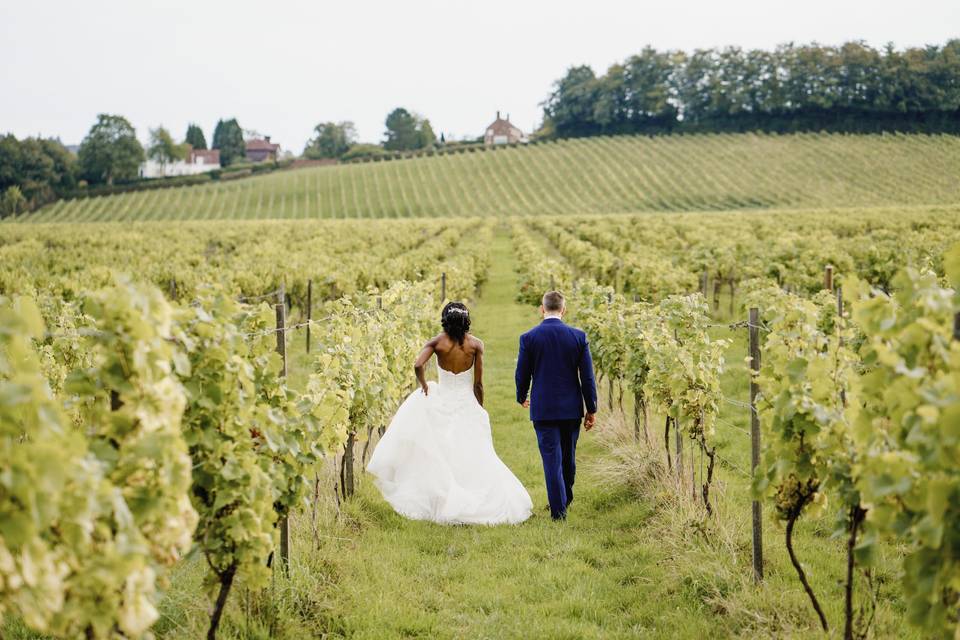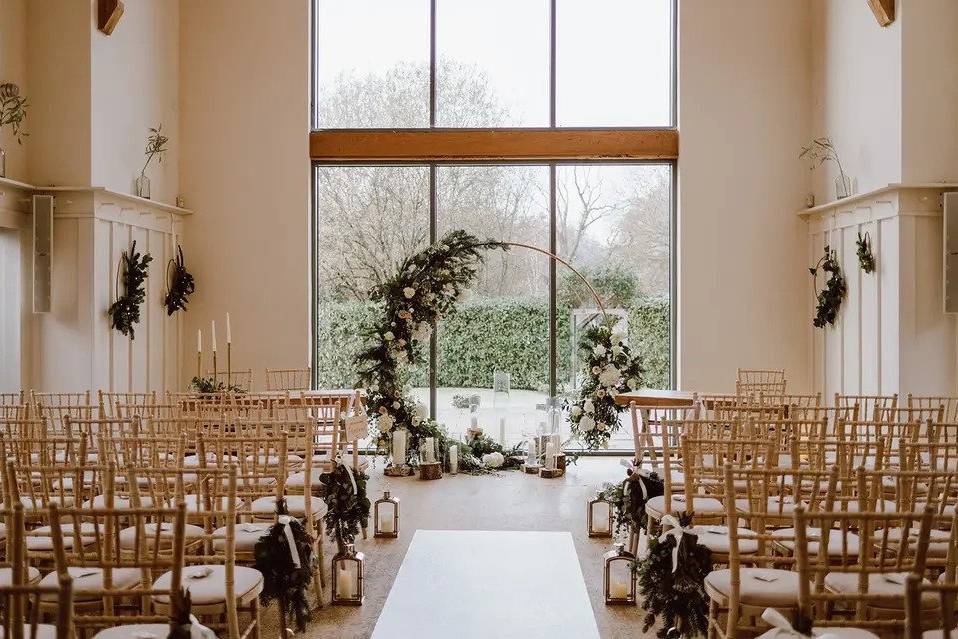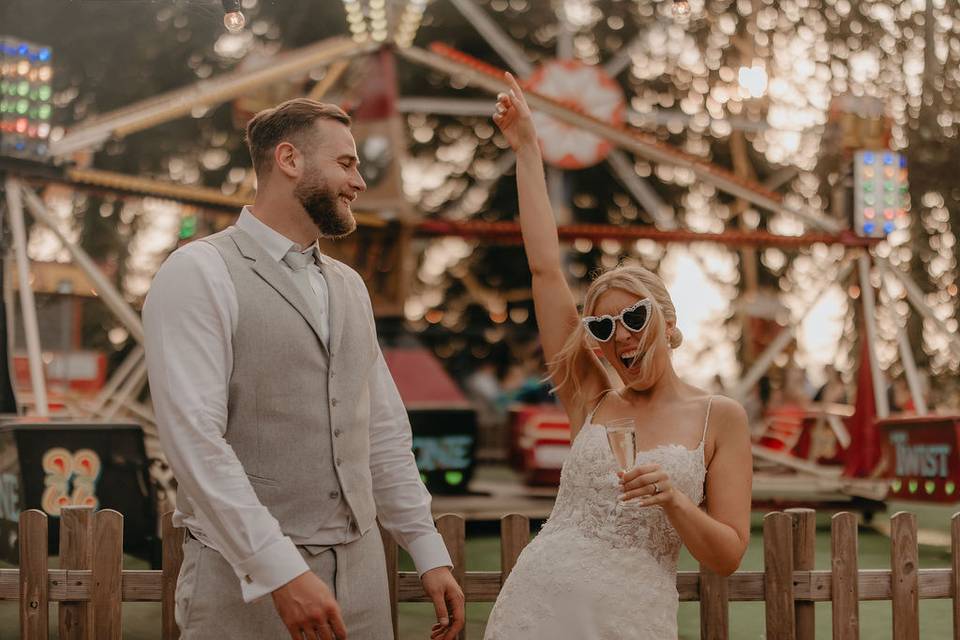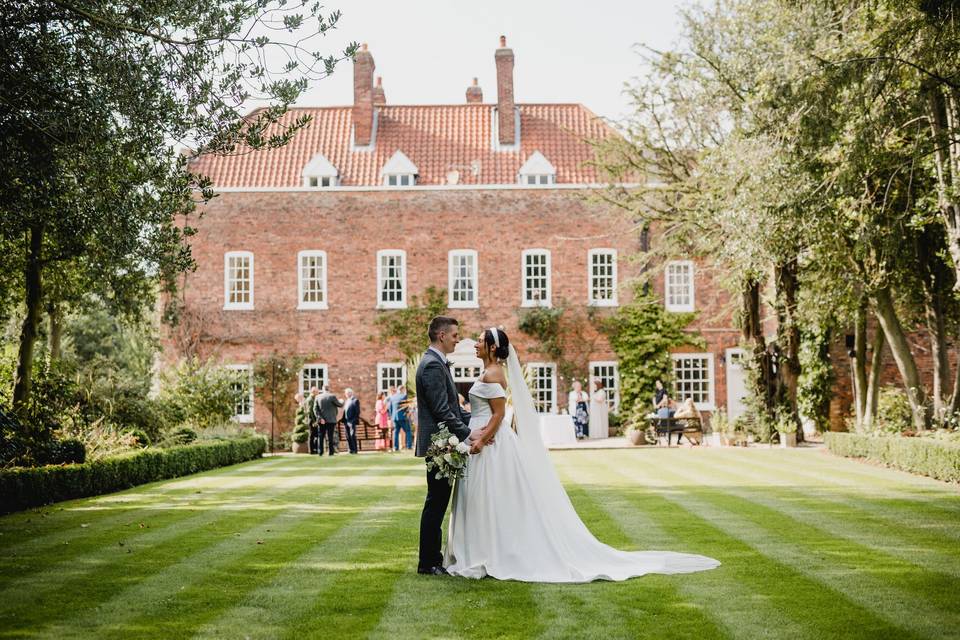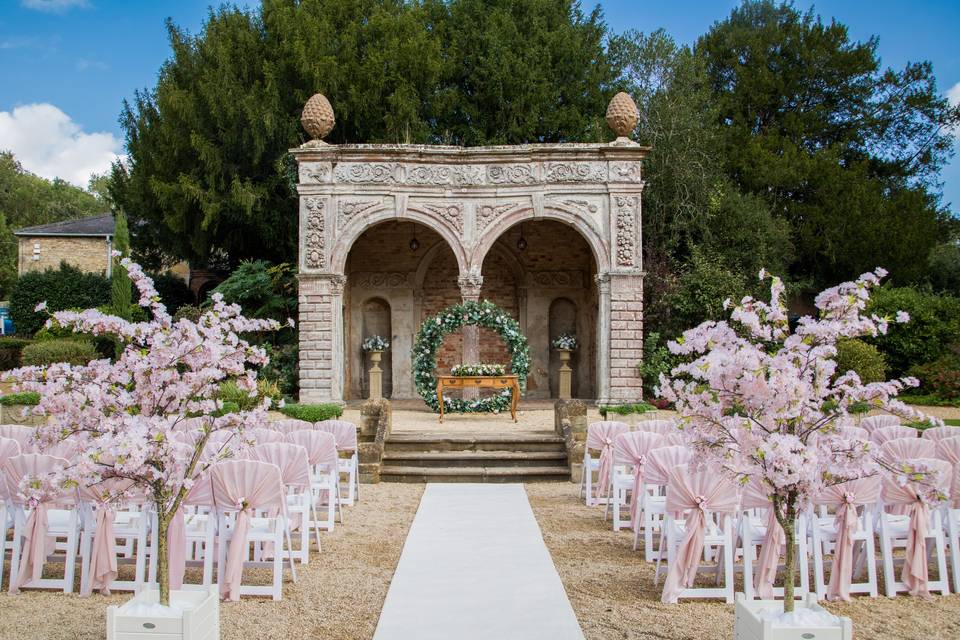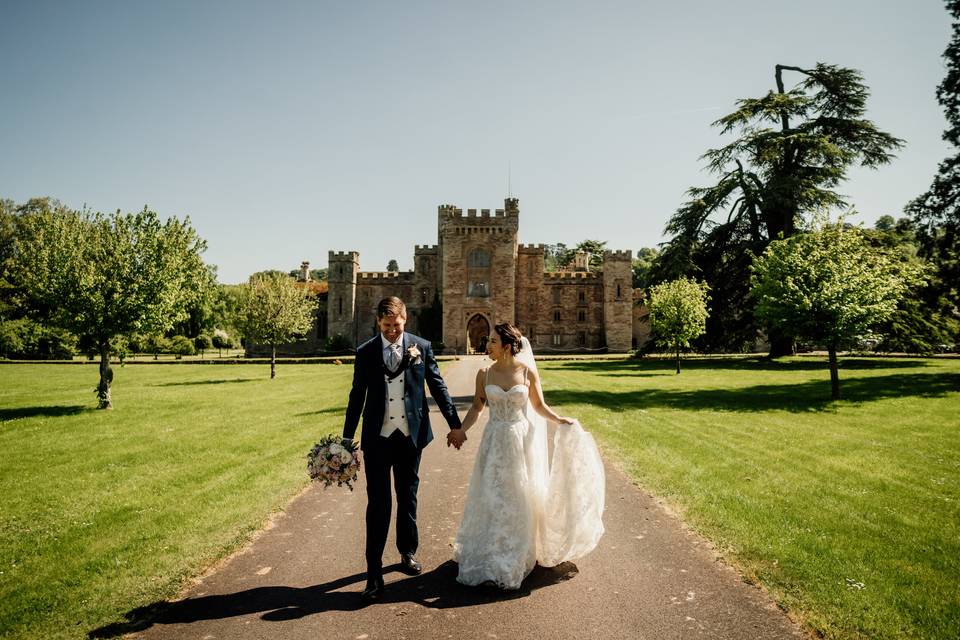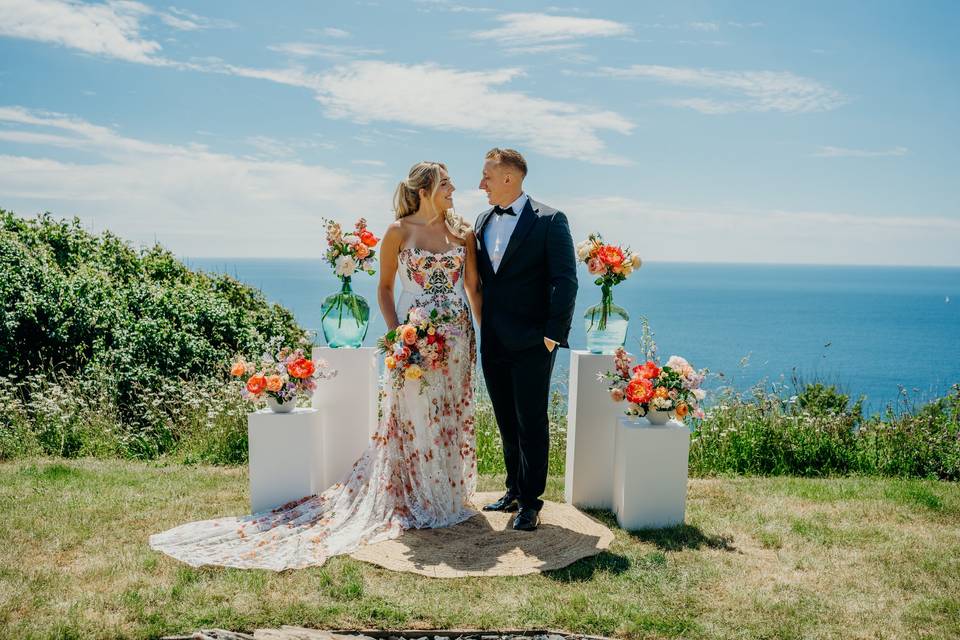Multicultural Weddings: How Real Couples Merged Their Cultures on Their Wedding Day
Three couples explain how they organised their multicultural wedding days - if you’re combining cultures on your wedding day, this is the advice you need
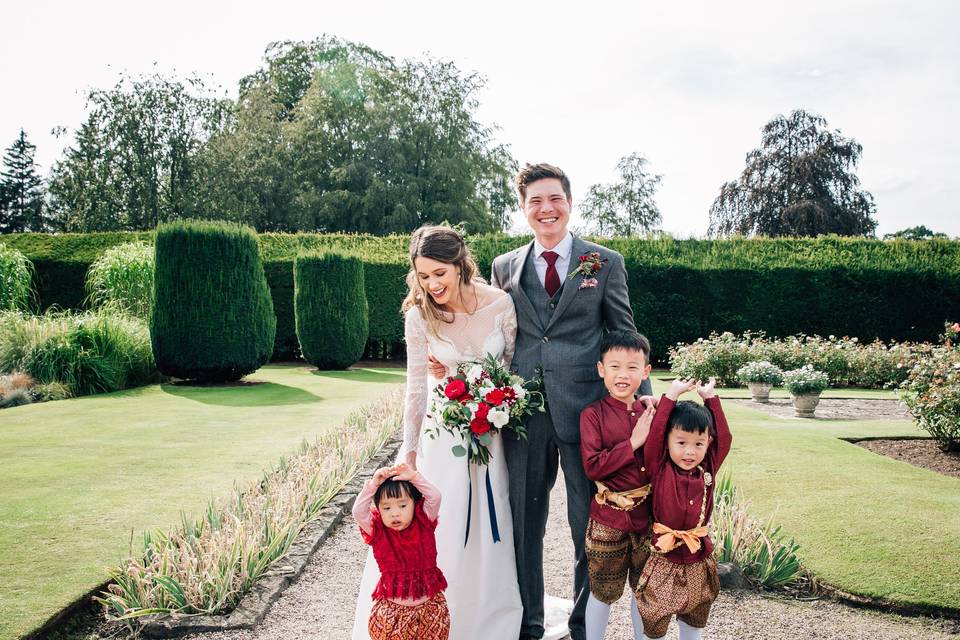
Planning a wedding day can be quite the feat and planning a multicultural wedding celebration can feel even more overwhelming.
From pleasing both sides of the family and fulfilling expectations while showcasing your unique relationship and making everyone feel involved, merging cultures can feel like quite the balancing act when you’re setting out on organising your wedding day.
It needn’t be a struggle, however, as these three couples prove. Here’s how fusing cultures on their wedding day worked for them, with advice on how to pull it off and make it feel personal to you too.
READ MORE
- From Venue to Makeup Artist: How to Plan Your Entire Wedding Online
- 12 Sweet Ways to Celebrate Your Original Wedding Date If You’ve Had to Postpone
- How to Put Together a Wedding Guest List (and the 5 People to Cross Off Immediately)
Amelia Jean Hershman-Jones and Josh Hershman-Jones
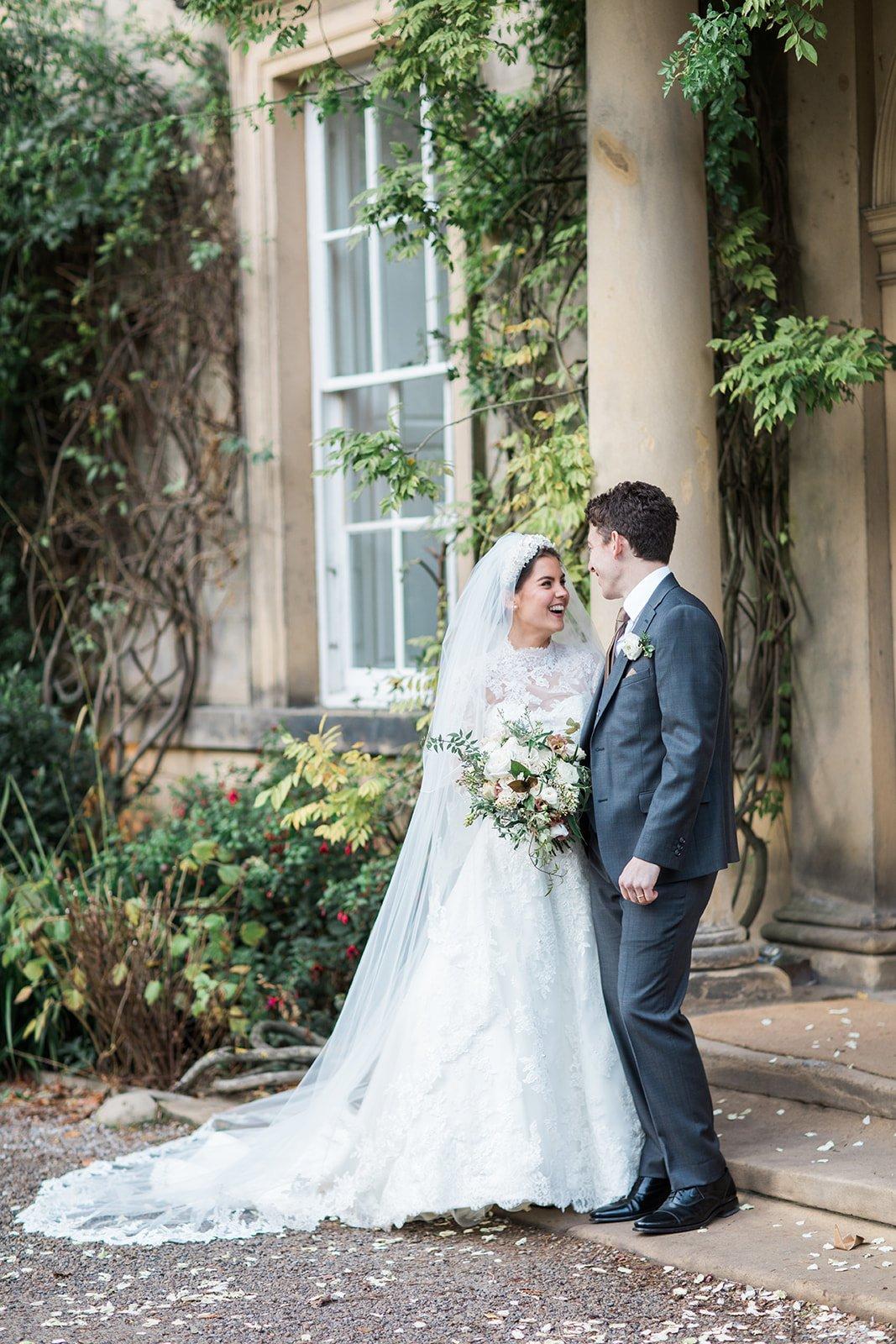
Our Cultural Heritage
“I am Christian and my husband is Jewish. While I briefly considered converting to Judaism, it just didn’t seem right for us as a couple.”
How We Began Wedding Planning
“We wanted the wedding to be a blend of both of our cultures without a distinct line where one started and the other ended. We’ve always seen our relationship as equal and believe all religions are founded on the same thing: being a good person. We therefore wanted to merge the two as much as possible.”
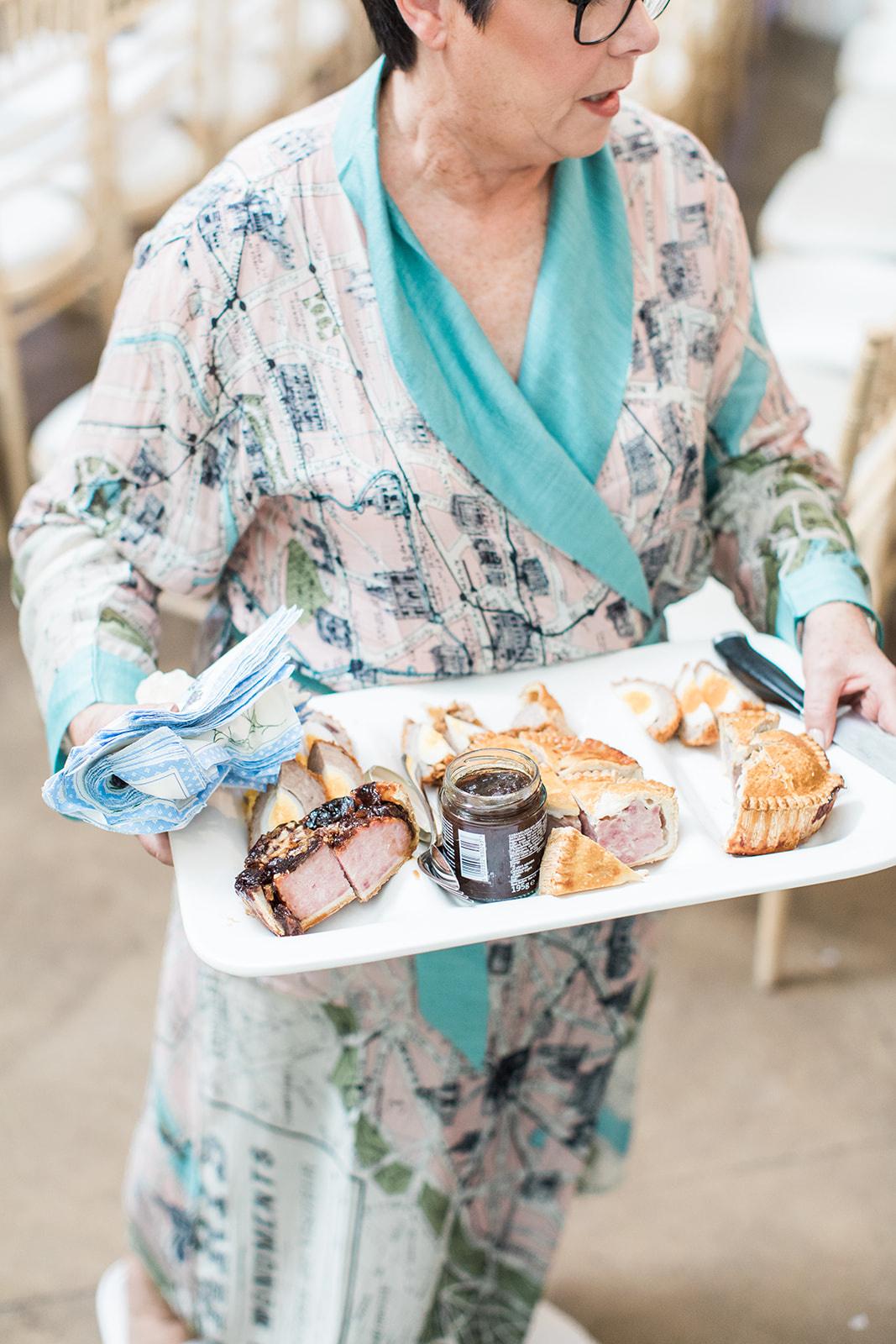
How We Combined Our Family Traditions
Preparation for the Wedding
"My husband had traditional Jewish pre-ceremony drinks (called a tisch) in his room with his best men, ushers, father and grandfather. This is when the men normally sit around and have a whisky or two and say some prayers before the ceremony, although my husband just stuck to the whisky and ‘getting ready together’ part!
"My mum also prepared a platter of pork pies and scotch eggs which got delivered into their room for it - something from Yorkshire to line their stomachs.”
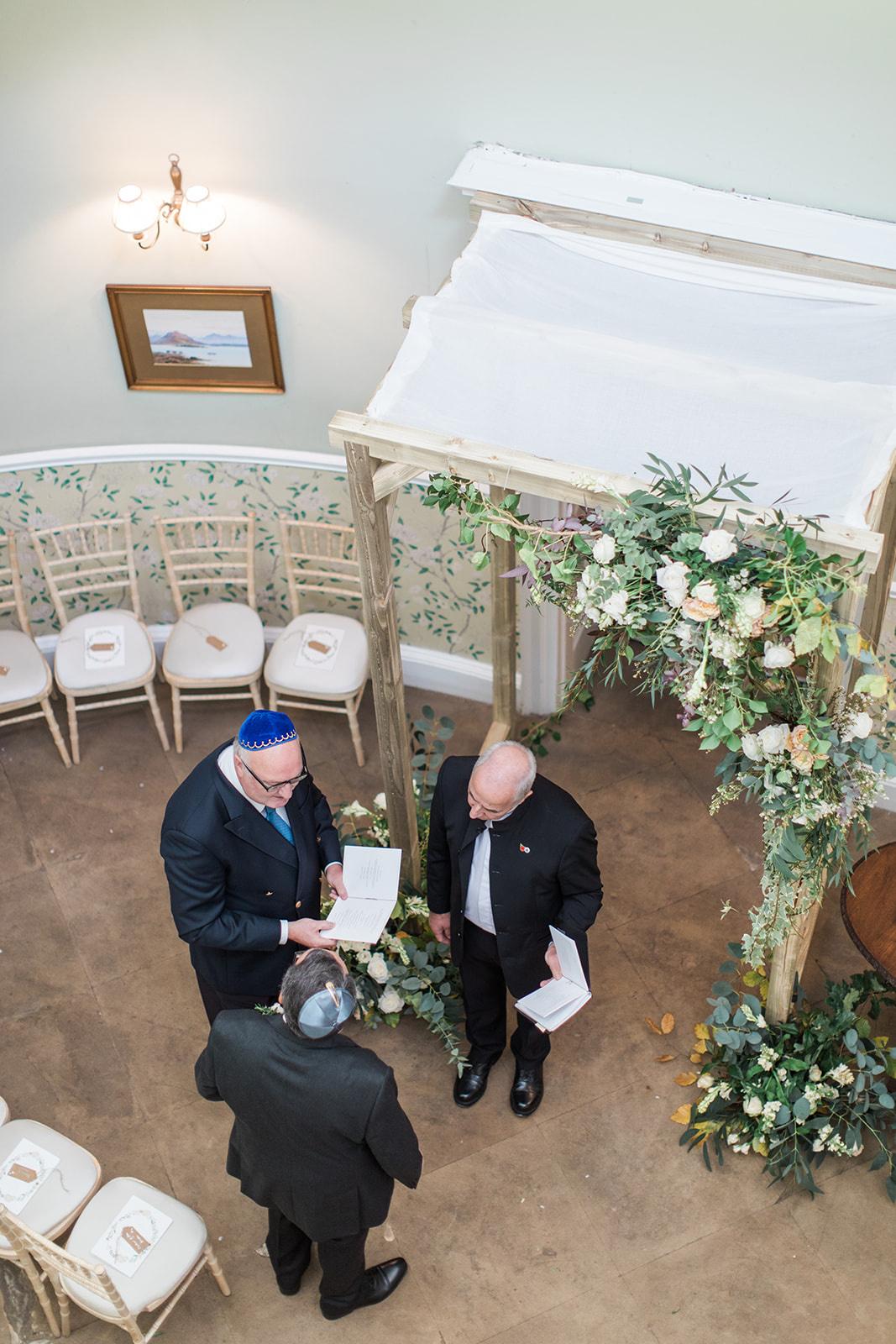
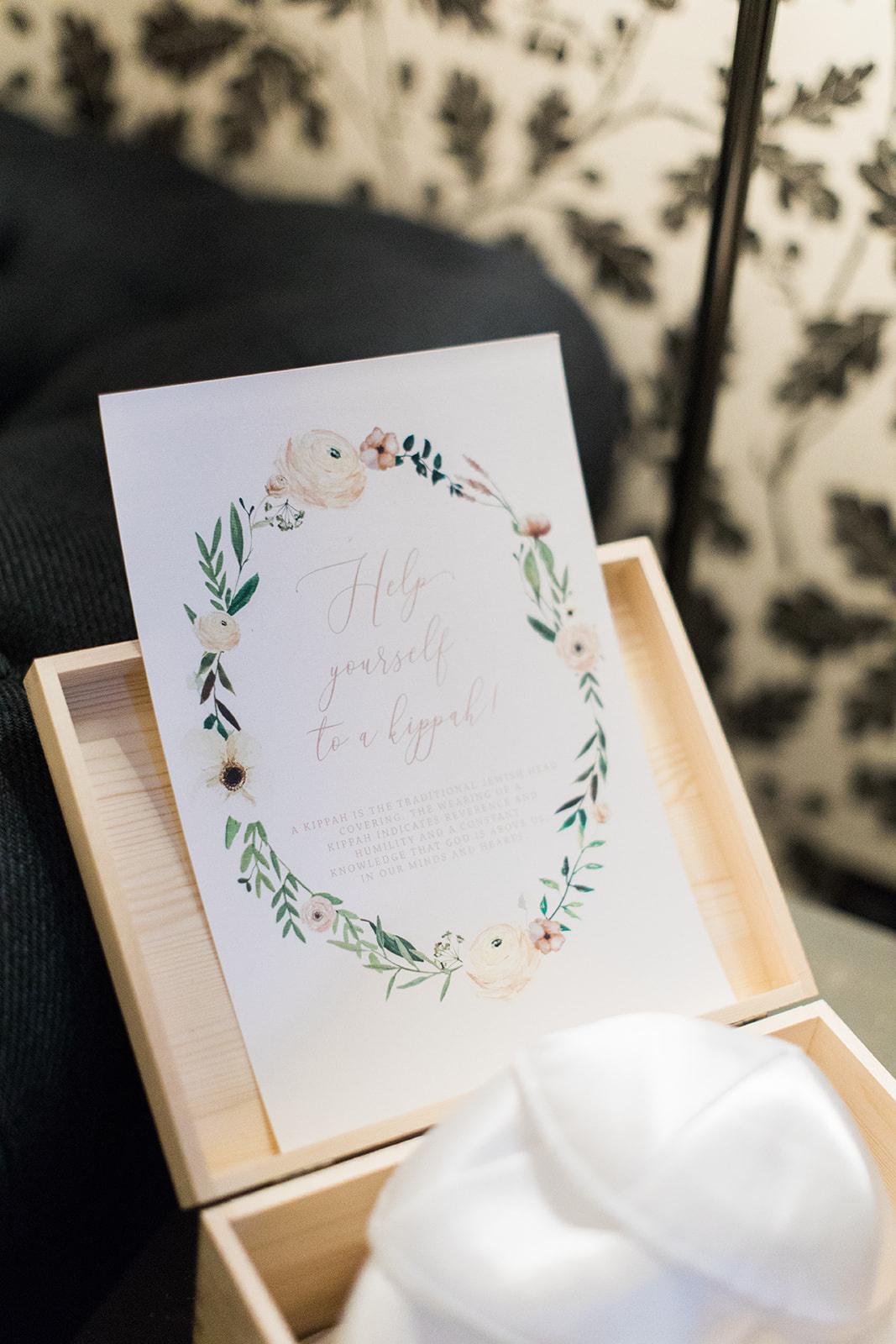
The Marriage Ceremony
"The vicar from my home church had recently gone into retirement, so we had to search high and low to find a relatively local rabbi and vicar who would be willing to do a blended service. We eventually found them and they worked together on a service that would cover everything we wanted.
“The chuppah wedding ceremony canopy was built by my uncle (who isn’t Jewish) and it didn’t have any religious symbols on it which was important because we were legally married by a registrar before the religious element. While the ‘canopy’ used in traditional Jewish ceremonies is usually a tallit (prayer shawl), we had a piece of linen with flowers wound around it that we’ll have made into something for our first baby.

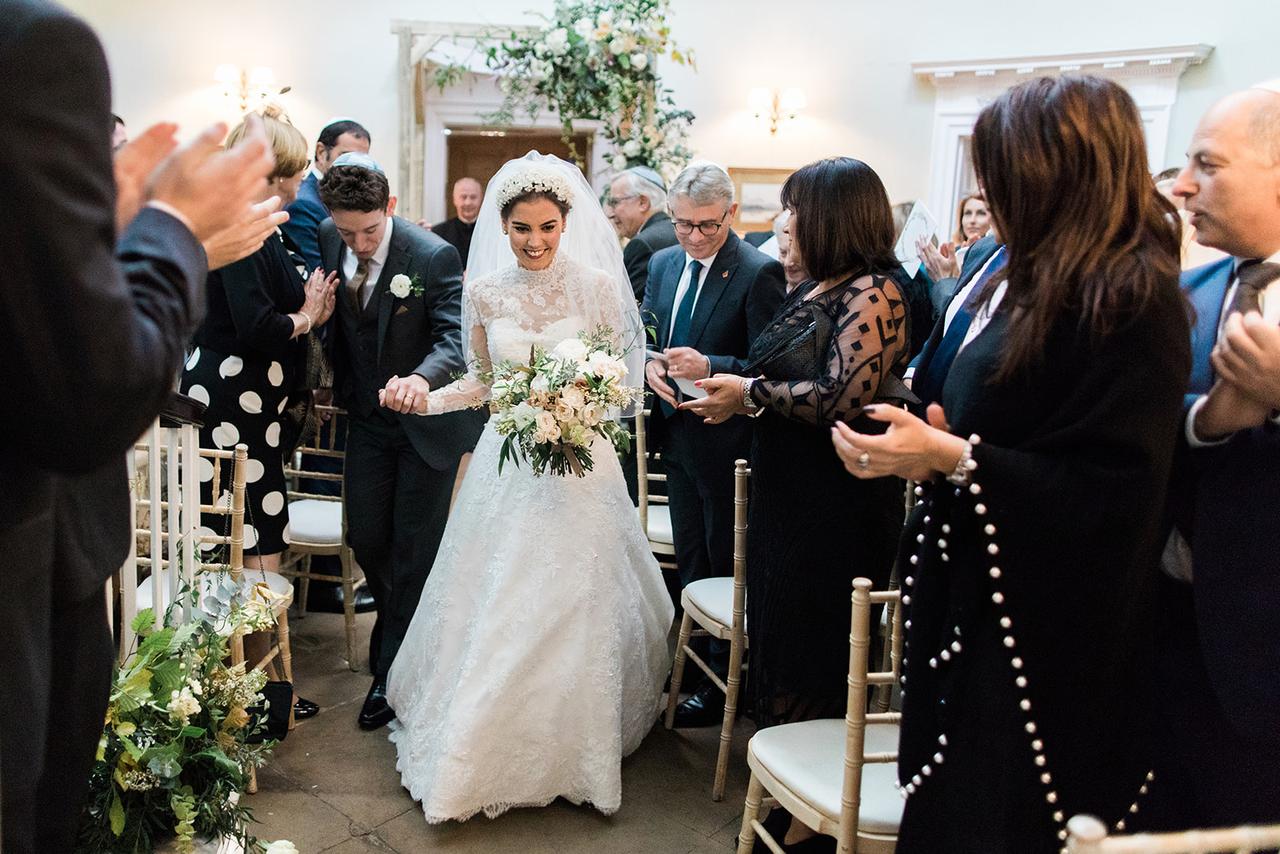
“We had the Jewish elements of the service explained on the back of the order of service. As guests walked into the ceremony we also had a box of custom-made kippah embroidered with our names and the date, along with an explanation for our Christian and non-religious guests as to what the Jewish aspects of the service signified.
“Lastly, just before we walked back down the aisle together as husband and wife, we smashed a glass. This recalls the destruction of the temples in Jerusalem ‘even at the happiest hour’. My father-in-law then made the shards into a mezuzah (a small box containing the handwritten words of a Jewish prayer called the Shema) as an anniversary gift for our front door.”
The Wedding Breakfast
“We decided on a modern sponge wedding cake and my mum organised a traditional fruit wedding cake and a wheel of Wensleydale to have with it. This is a Yorkshire tradition that our non-Yorkshire guests loved when they tried it. My husband’s grandma also made kipferl, which are Austrian crescent-shaped biscuits, and we served these alongside the cakes.
“In order to have a rabbi and vicar leading the service on the same day, we had to get married on a Friday. My husband’s grandpa led the traditional Friday evening Shabbat blessing before dinner with prayers, wine and challah (a plaited Jewish bread served on special occasions) after I lit the candles and said a blessing over them.

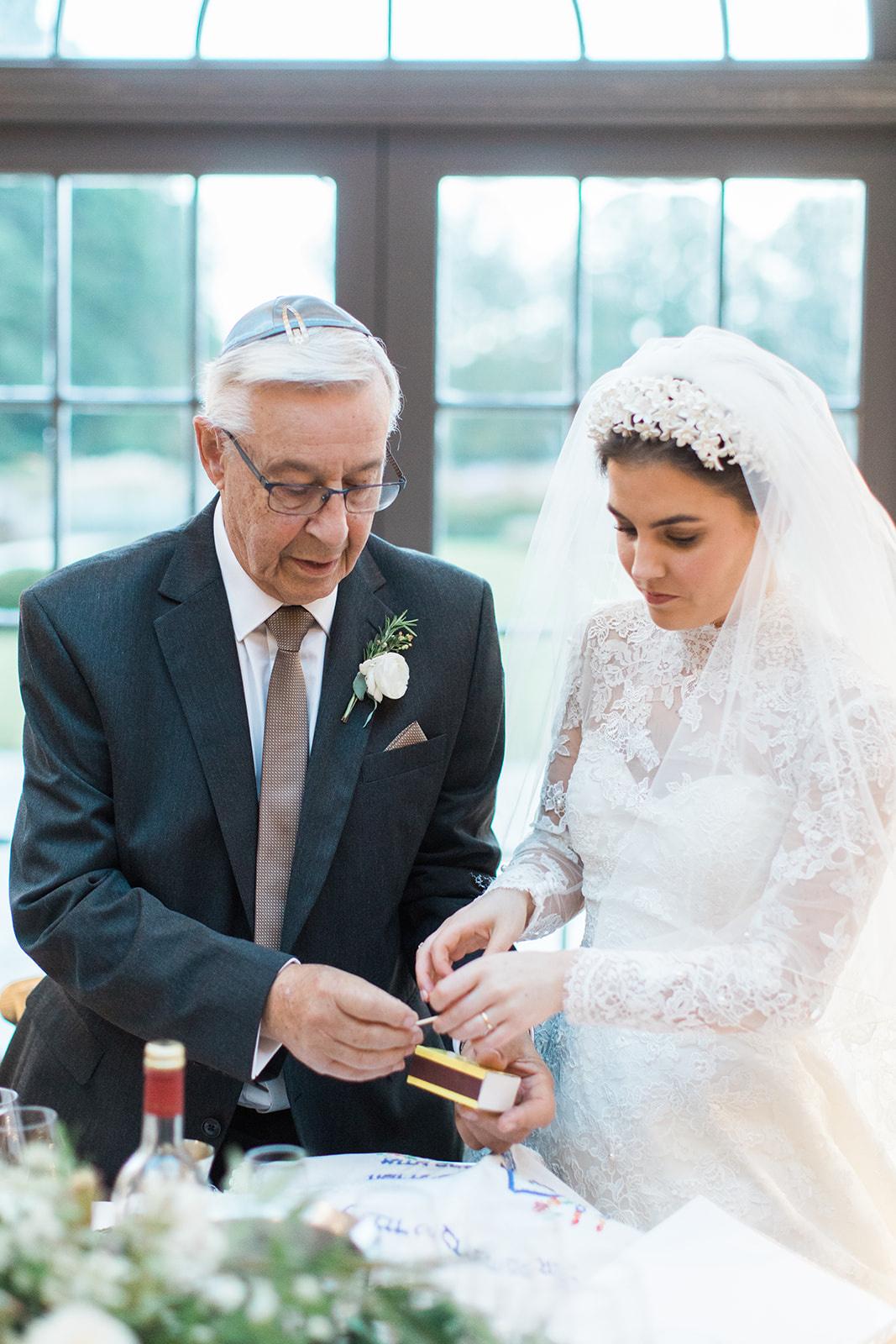
The Reception
“We had around five Israeli dances before the DJ started and we were lifted on chairs for the Hava Nagila, an Israeli folk song that’s sung at Jewish celebrations. It felt really special and got everyone from both sides on the dance floor together.”
The Personal Touches
“Our guests all commented on the venue and how personal it seemed. This was echoed by the personal touches throughout the day. I had our initials and wedding date embroidered into my veil and a Monica Vinader pendant with my late father’s handwriting on my bouquet, so it felt like I was holding his hand as I walked down the aisle with my mum. We also had lovingly curated table settings and finishing touches by myself, our florist, The Wilde, and stationer, Vine In The Wild.
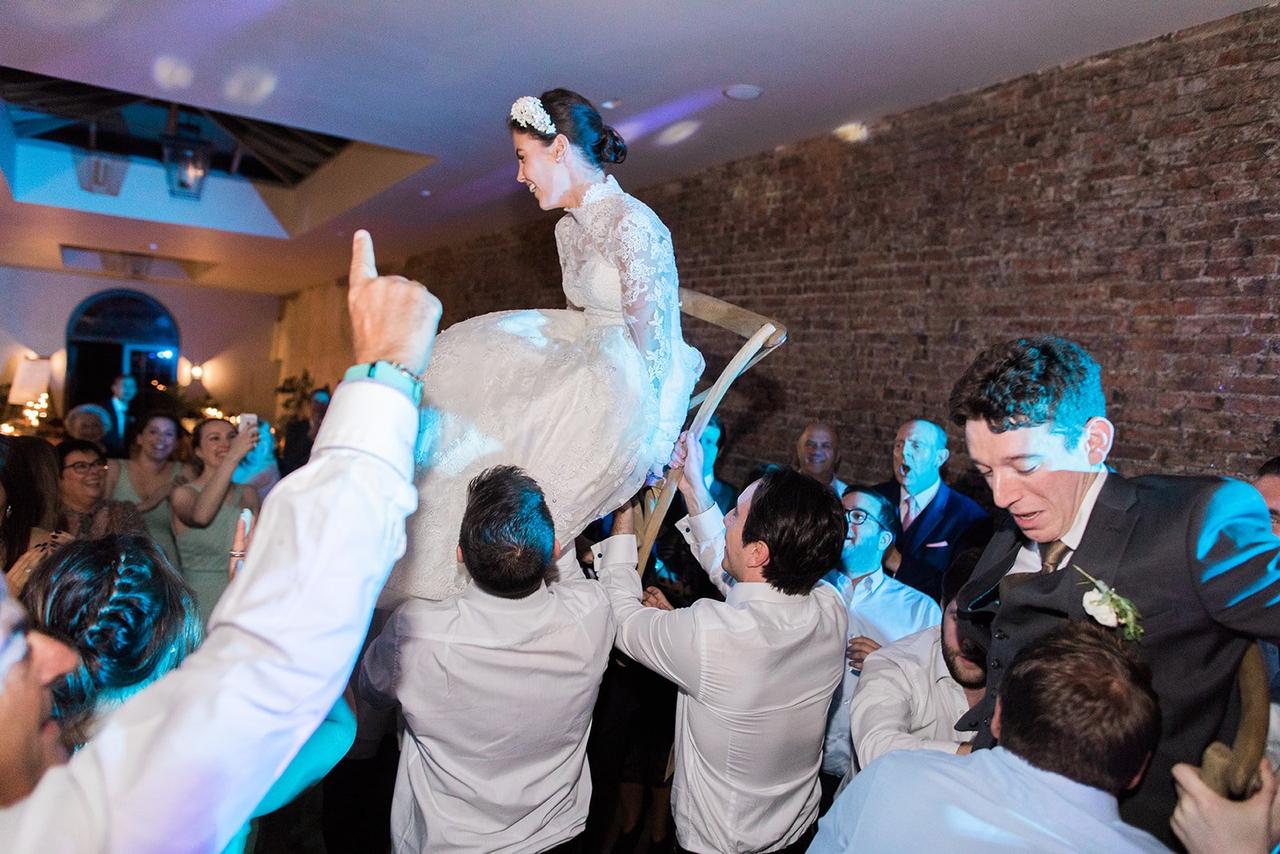
What We Loved Most About Our Wedding
“The atmosphere and feeling of togetherness. We decided to host it at Middleton Lodge in Richmond, North Yorkshire, where we were able to have exclusive use of the main house for the ceremony and orangery (or Fig House) for the reception.
“We had use of the venue for a rehearsal dinner the evening prior until breakfast the day after. We didn't see anyone we didn’t know (excluding some staff) on the day. That was really important to us. We wanted it to feel intimate - we had a guest list of around 90. Our rule was that if we didn’t know them well enough to give them a hug on the day, we didn’t invite them.
“We also didn’t have ceremony and reception guests - everyone was welcome for the entire day. I suppose that was our theme - everyone was welcome and we were thrilled that they were there. While I am from Yorkshire, my husband is from North London (as was my late father). People had travelled a long way to be there so it had a real feeling of an ‘event’ rather than people drifting in and out. It was such a dreamy three days.”
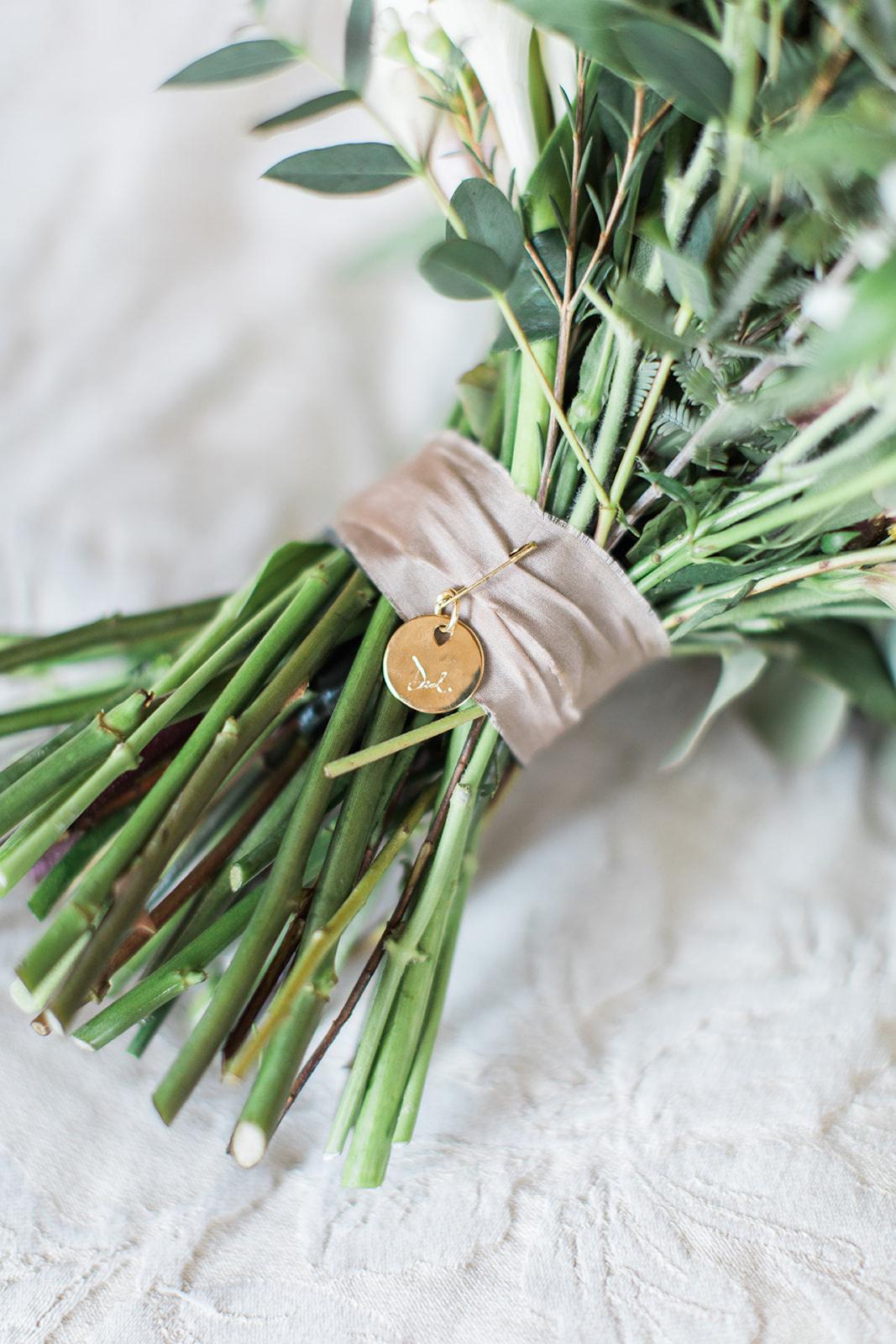
How We Got the Balance Right
“The most difficult thing was finding a vicar and rabbi who were willing to perform a blessing and work together on a service that wouldn’t cause offence to either side. There was a lot of back and forth and compromises made on both sides, but in the end our service was beautifully personal and everything we’d hoped for. And, while I was quite annoyed about having to use a registrar for the legal part, she was actually a wonderful woman and made our legal ceremony really memorable and special.”
Our Advice for Couples Planning a Multicultural Wedding
“You want your marriage to be more beautiful than your wedding day - being open minded and willing to compromise is key.
“It’s not worth falling out with your best friend over a particular Bible or Torah passage, or any other element of your wedding that, in the end, really won’t matter. I wanted a rabbi to come into a church to marry us, but my husband thought the venue might eclipse the Jewish side slightly. I hate to admit it but he was right. Keeping the venue neutral struck exactly the right chord and meant that all of our guests felt comfortable.”
Anna Lao-Kaim and Nick Lao-Kaim
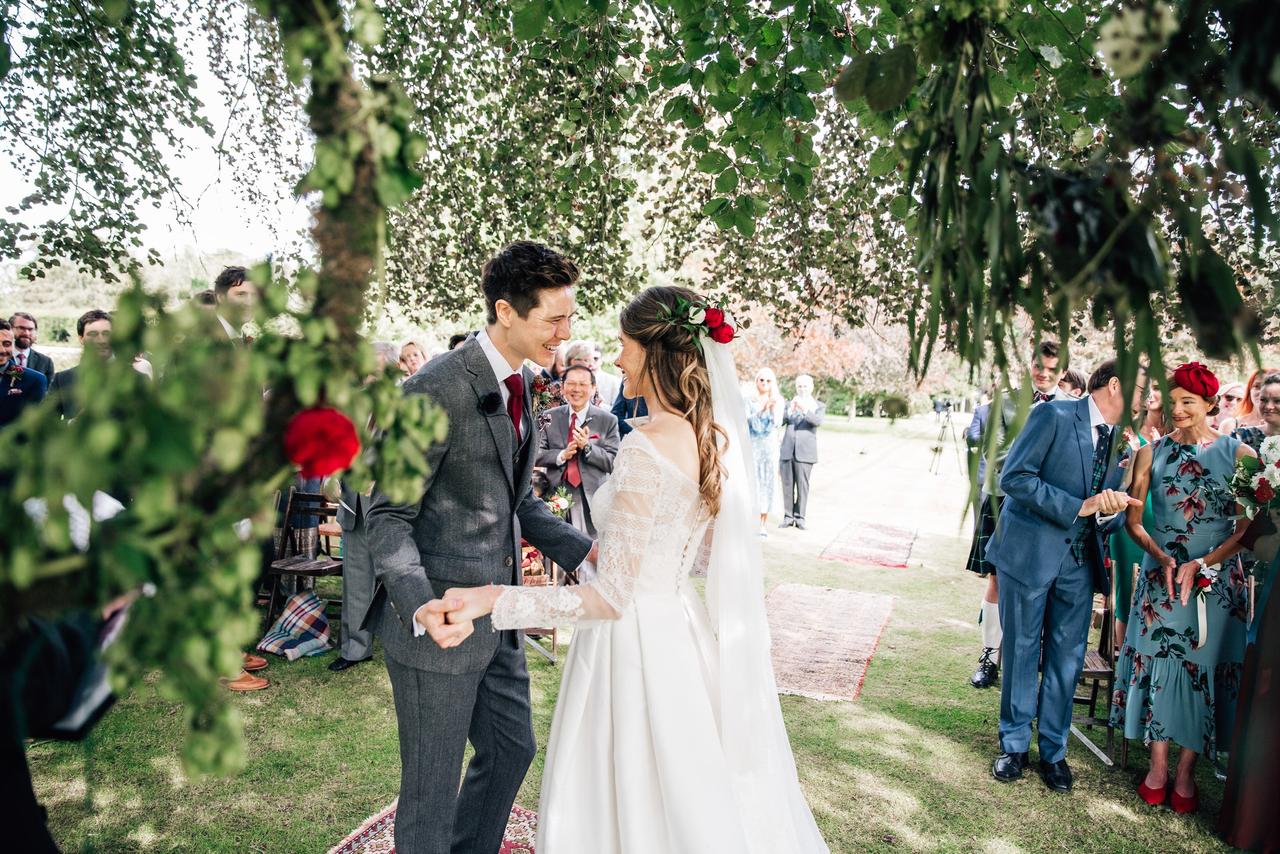
Our Cultural Heritage
“I’m English with Scottish ancestry and my husband Nick’s mum is Chinese, although was born in Thailand, while his dad is Polish. Neither Nick, I or my side of the family are religious but Nick’s mum has a strong Buddhist faith and Nick was brought up to honour many Buddhist traditions. I also spent my childhood in New Zealand so we wanted to tie that in somehow too. As merging cultures goes, we ended up having quite a bit on our plate!”
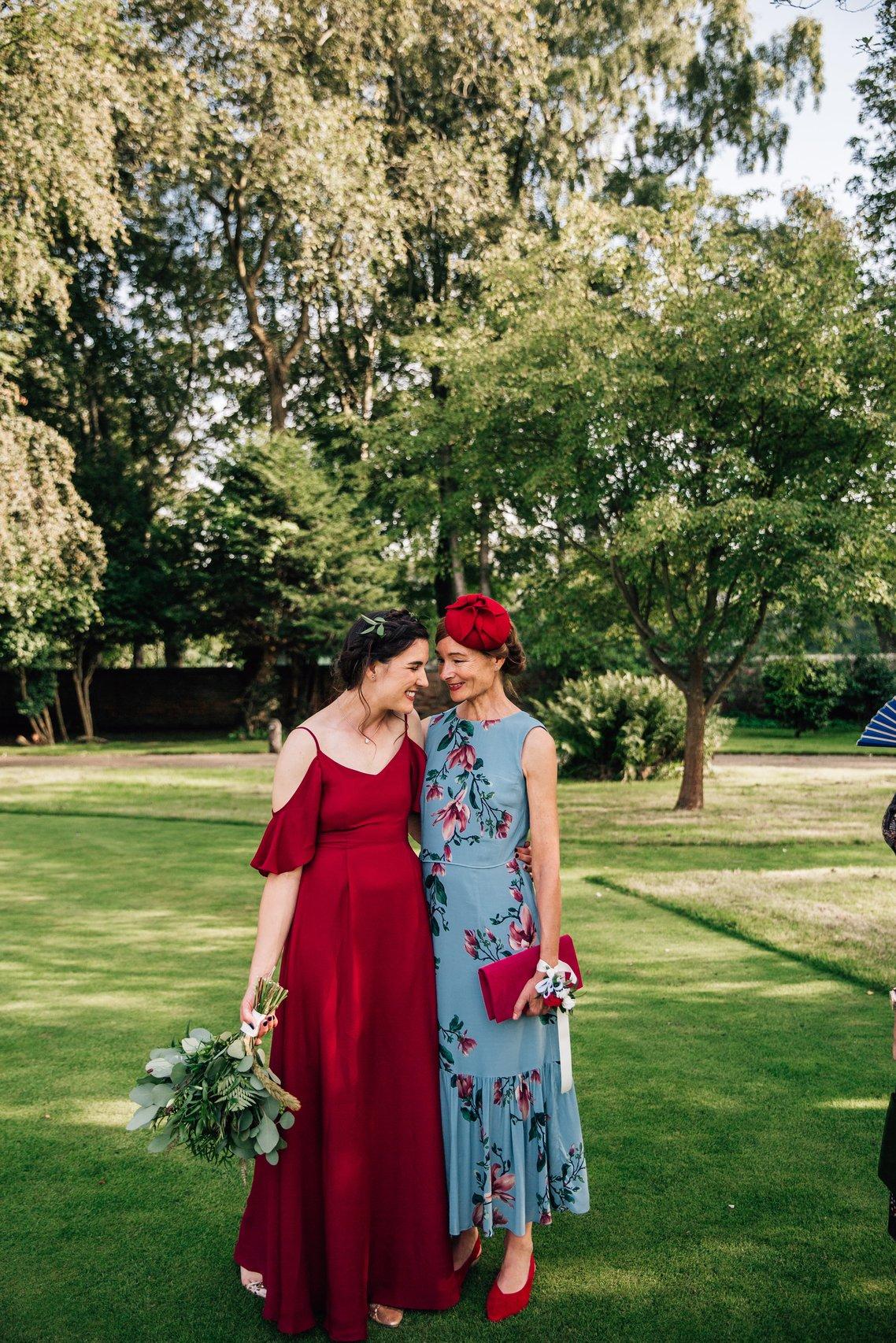
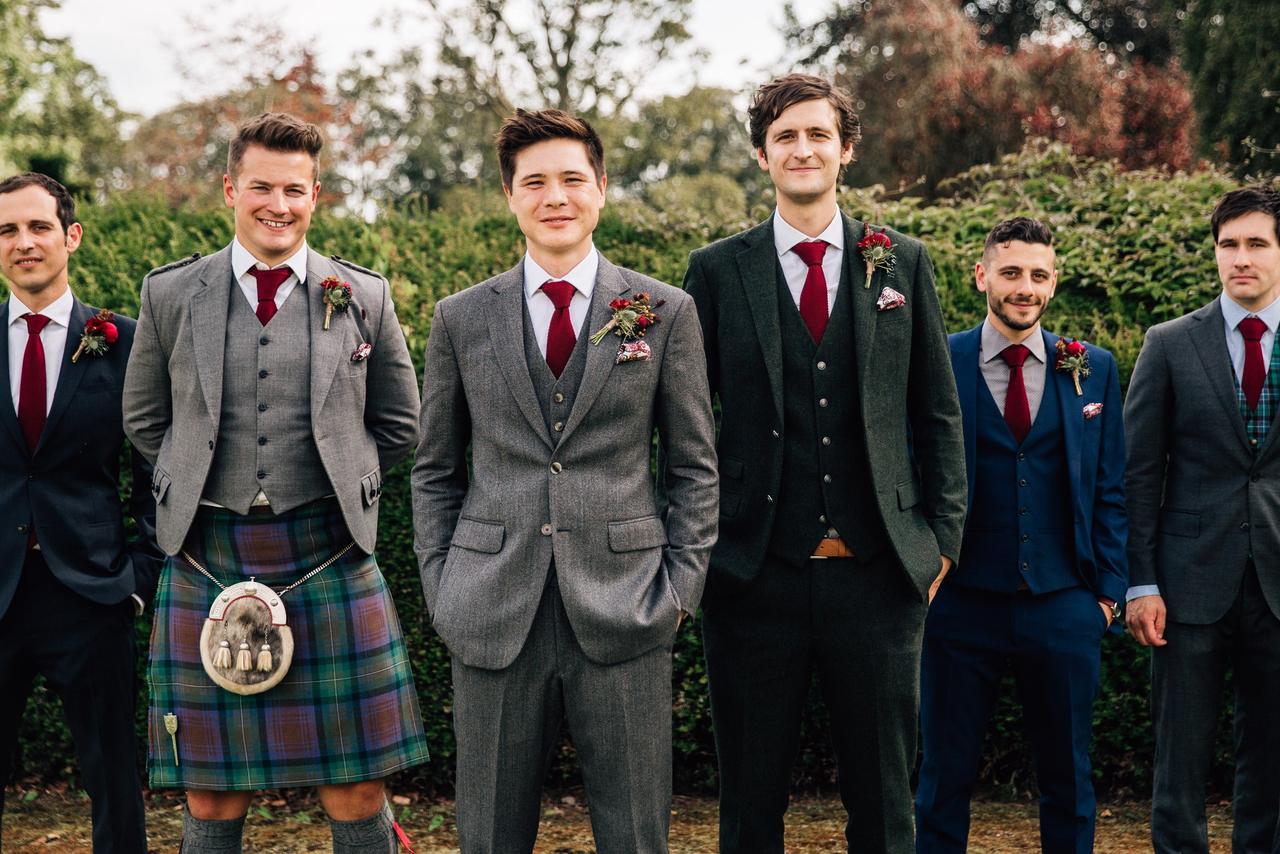
How We Began Wedding Planning
“We toyed with taking off to Thailand but seeing as our paths crossed in Fife, Scotland, it only felt right that we tie the knot there too. We covered every corner of the Kingdom in our rental Kia and Myres Castle was the final venue we visited. A best 'til last situation, it didn't take long after arriving to feel like this was simply 'our place'.
“We established early on that we wanted a civil wedding ceremony and at the time civil services in Scotland were also a bit more flexible than in England - we were set on getting married outside and there were multiple places within the venue that we could have done so. We chose a giant copper beech tree in front of the castle and plotted the vibe from there. The plan was to keep the marriage ceremony itself personal to us as a couple and bring in multicultural elements around that.”
How We Combined Our Family Traditions
Preparation for the Wedding
“First off, we scheduled our wedding day for the Saturday of an August bank holiday weekend as it allowed an extra day for recovery, not to mention getting to and from Fife for all of our guests. It just so happened that this was an auspicious day in the Chinese lunar calendar, which was quite literally pure luck but made my mother-in-law and her family very happy.
“We decided to integrate as many of the cultural influences dear to us as we could in ‘visual’ elements of the day. The colour red was a key focus as it symbolises joy, happiness and good fortune in Chinese culture - bridesmaids wore red, my mum had a red hat made, the groomsmen wore red ties and I had red flowers in my hair.
"Our florists, the fantastic Oor Fleurs, also incorporated wild poppies into bouquets and buttonholes as this is the national flower of Poland, while fern-heavy foliage decoration was a nod to New Zealand. Thistles repped Scotland and my dad and brother also wore waistcoats in our family tartan. Nick’s mum’s side of the family also also wore traditional Thai dress.”
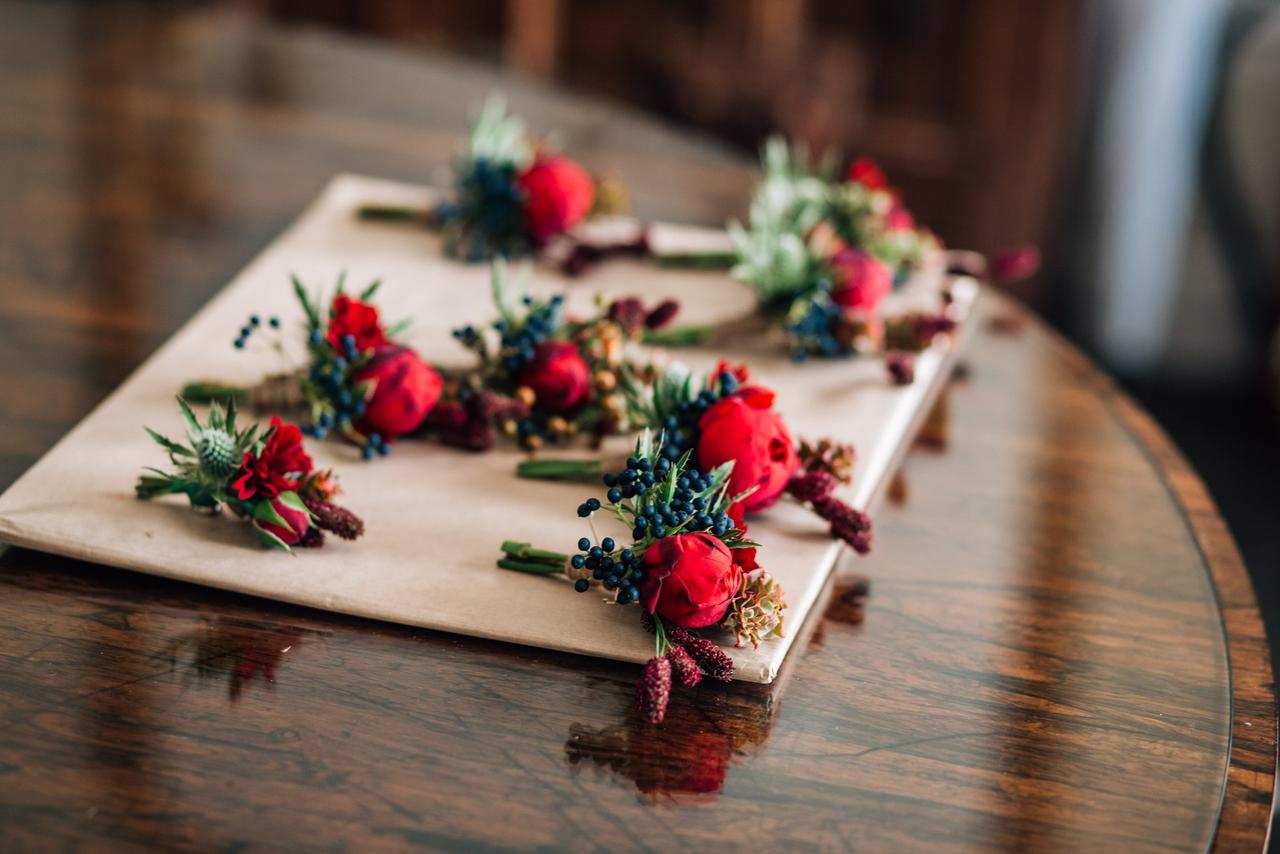

The Marriage Ceremony
“We shaped our ceremony to represent our joint loves and dynamic. We had readings from our favourite film, wrote our own vows and picked songs from bands we listened to when we were getting together (although a bagpipe malfunction meant that these were played over - there are definitely worse wedding day problems to have).
“After the legal service we hosted a traditional Chinese tea ceremony to honour and show our gratitude to our parents and elders. We hired wedding stylists The Little White Cow (now called Gloam) to help to dress our venue and they did an impeccable job of turning an old applestore into our tea ceremony room. They brought in red garlands, Chinese lanterns and created a memory table featuring all of our relatives that couldn’t be there, with photos of us as children and vintage world maps around the room to represent our various ‘homes’ around the world.
“For the tea ceremony itself, we began by lighting two red candles - one with a phoenix design and the other with a dragon motif to represent our family union. Our bridesmaids and groomsmen prepared the tea using leaves and fruits we purchased beforehand in London’s Chinatown and we served both sets of parents before aunts, uncles, cousins and my godparents. We bowed in front of each family member to express our respect (a gesture called the ‘wai’ in Thailand) and we received red envelopes filled with money or gifts in return. It felt like a very spiritual part of the day - our Thai Chinese side of the family felt represented, while our UK side felt included in a new ritual. We also included it in our plan of the day so that guests could watch while enjoying some fizz and canapés.”
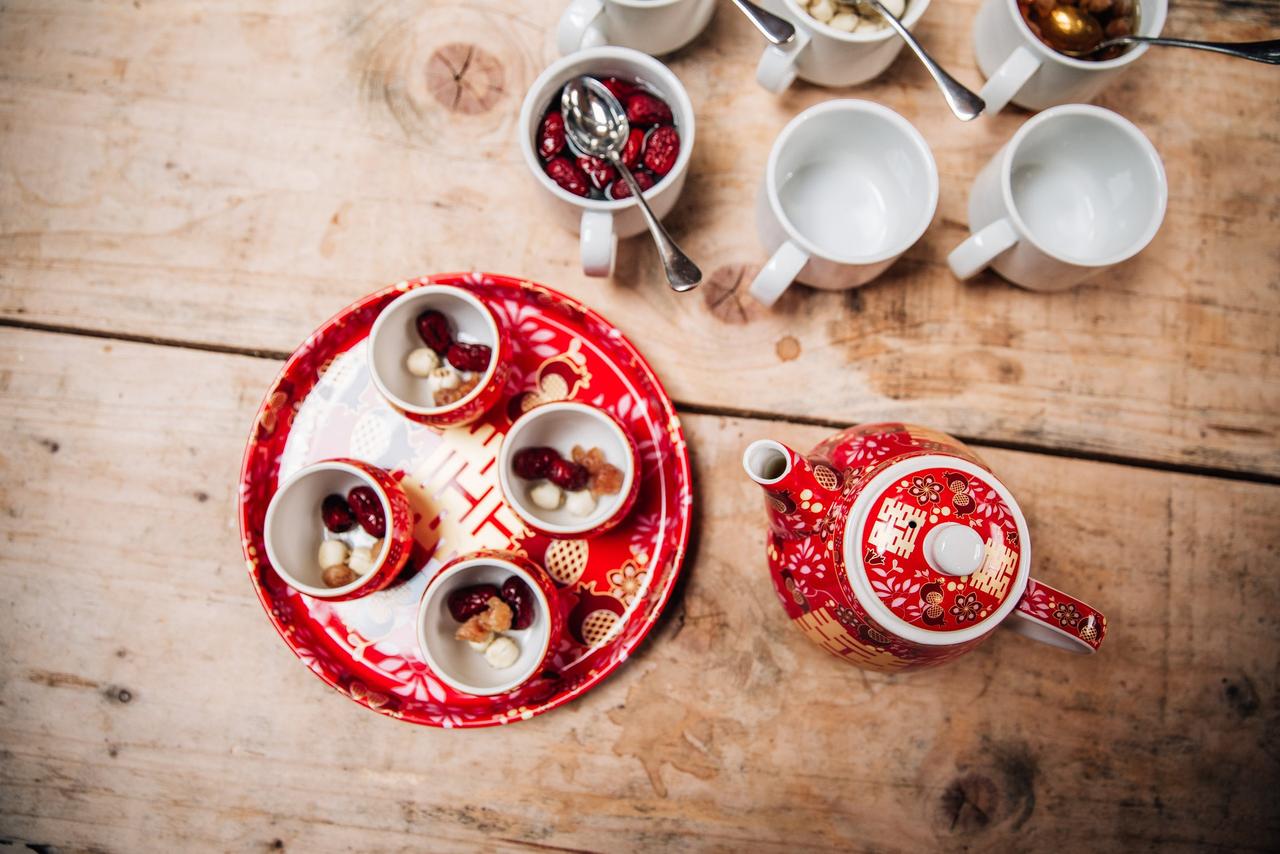
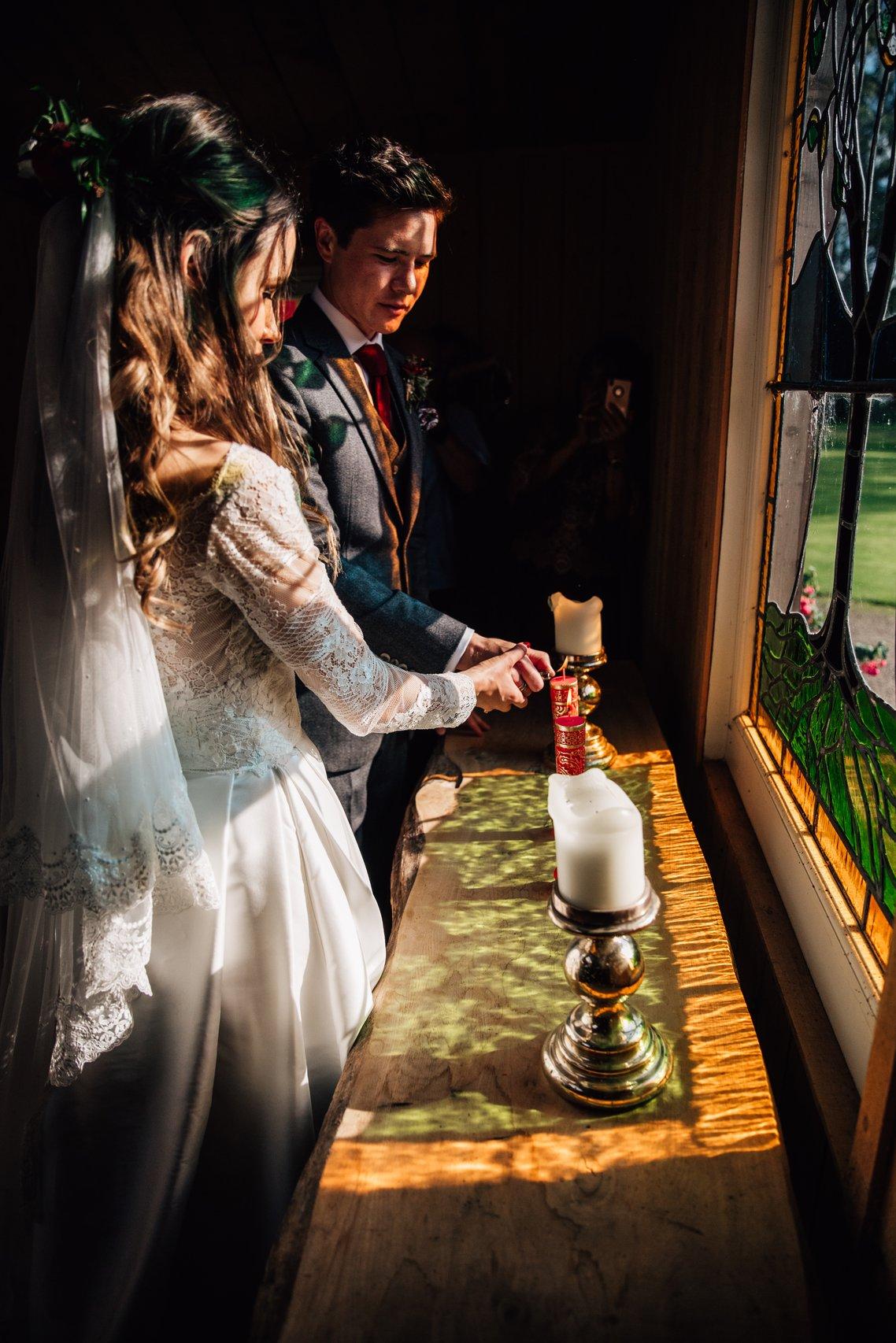
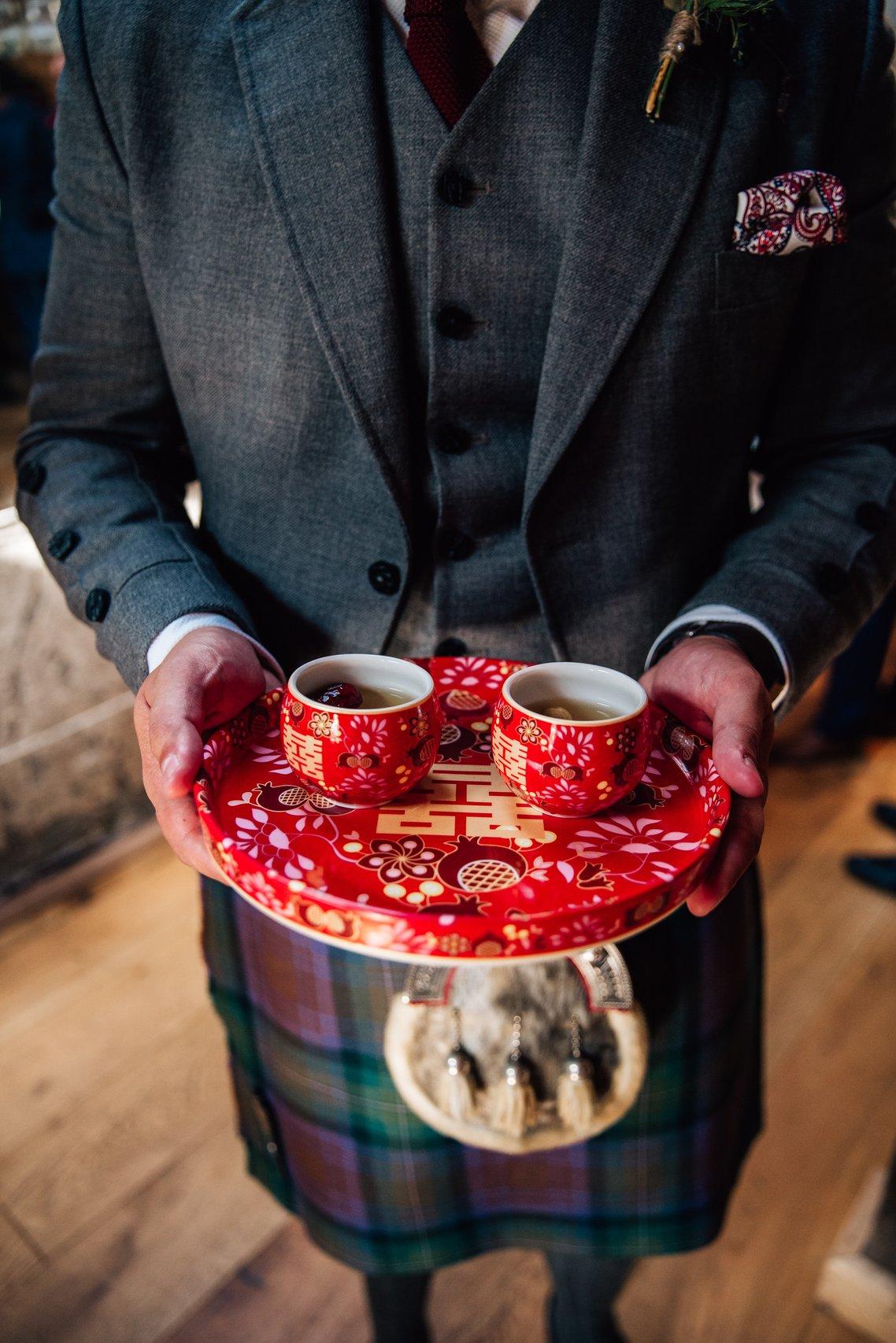
The Wedding Breakfast
“Nick’s dad is a chef and his mum owns a chain of Thai restaurants. Thai food was pretty much a non-negotiable for him - it’s the cuisine he grew up with and one of the things that makes him feel closest to his Thai side.
“Thai food is notoriously tricky to recreate authentically, but the incredibly talented Russell of Edinburgh Catering Co. rose to the challenge, and then some. An added ‘twist’ was that my mum has a fish allergy and goes into anaphylactic shock from fish sauce (a key ingredient in Thai cooking) and my dad isn’t the most enthusiastic fan of spice. Russell tailored the dishes to suit, with Nick’s mum sending sauce examples in the post. He nailed combining Scottish ingredients with Thai flavours - sharing starters included a spicy salad made with Aberdeen Angus, mains were local fish in a banana leaf and a Thai chicken curry roulade and, for pudding, Russell adapted one of our favourite desserts, profiteroles, filling them with a tropical pandan cream.
“My dad is a sommelier in the making - he came to the meal tasting and found wines to suit. We began with a sparkling wine with Thai butterfly pea flowers to add colour and Nick’s ‘toast’ was a Polish vodka shot. My father-in-law also ordered Polish beers.
“As for our cake, a local Fife baker made a layered sponge cake that we topped with two Thai elephants and dressed with thistles and red flowers. Evening food was DIY sourdough pizzas to mop up the vodka…”
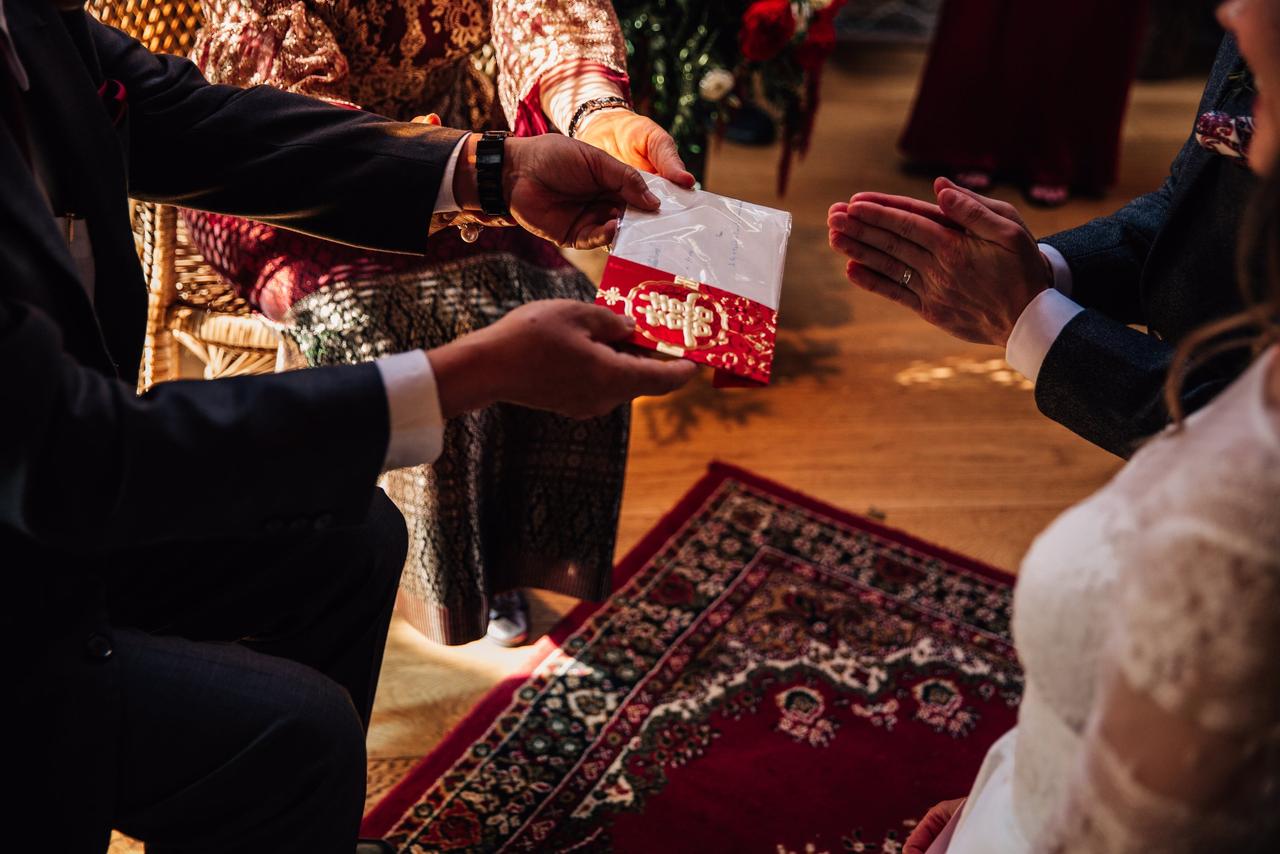
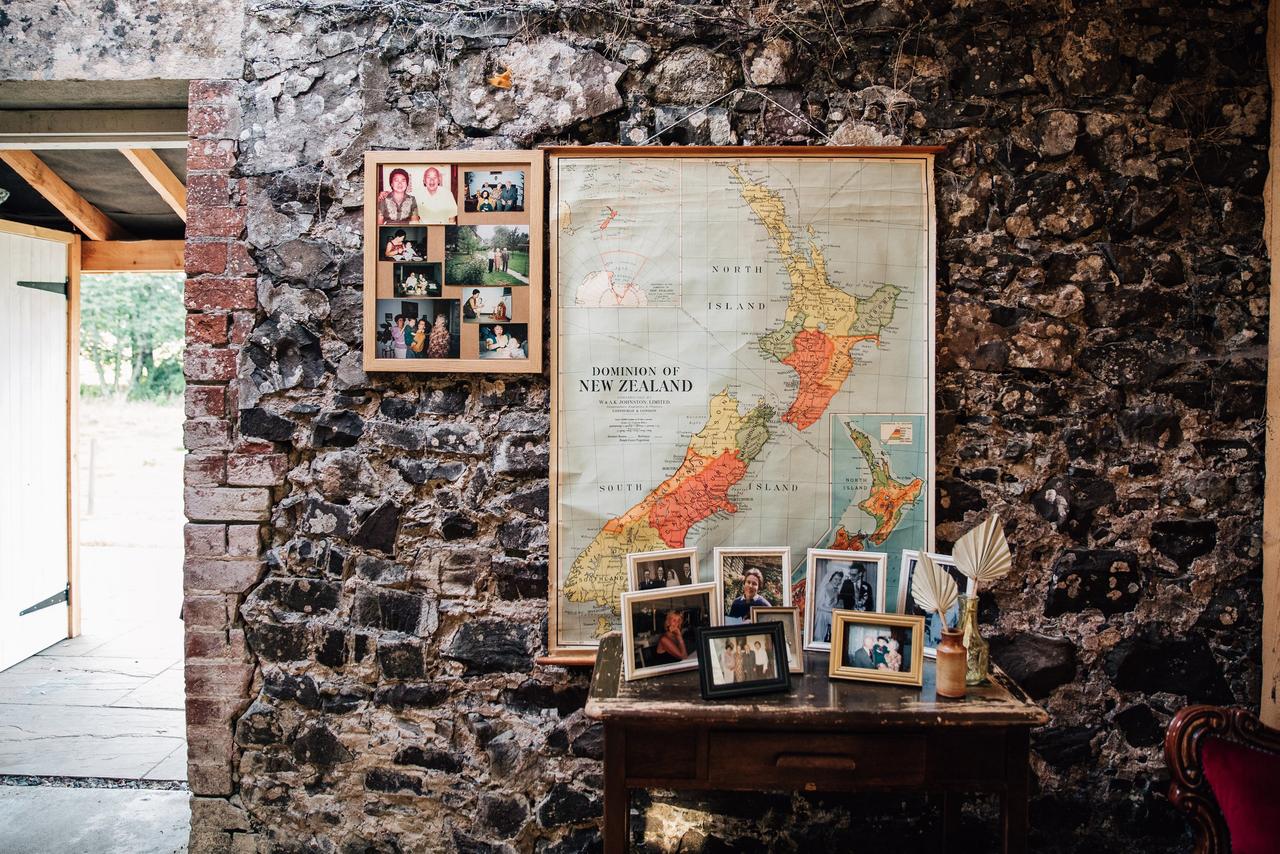
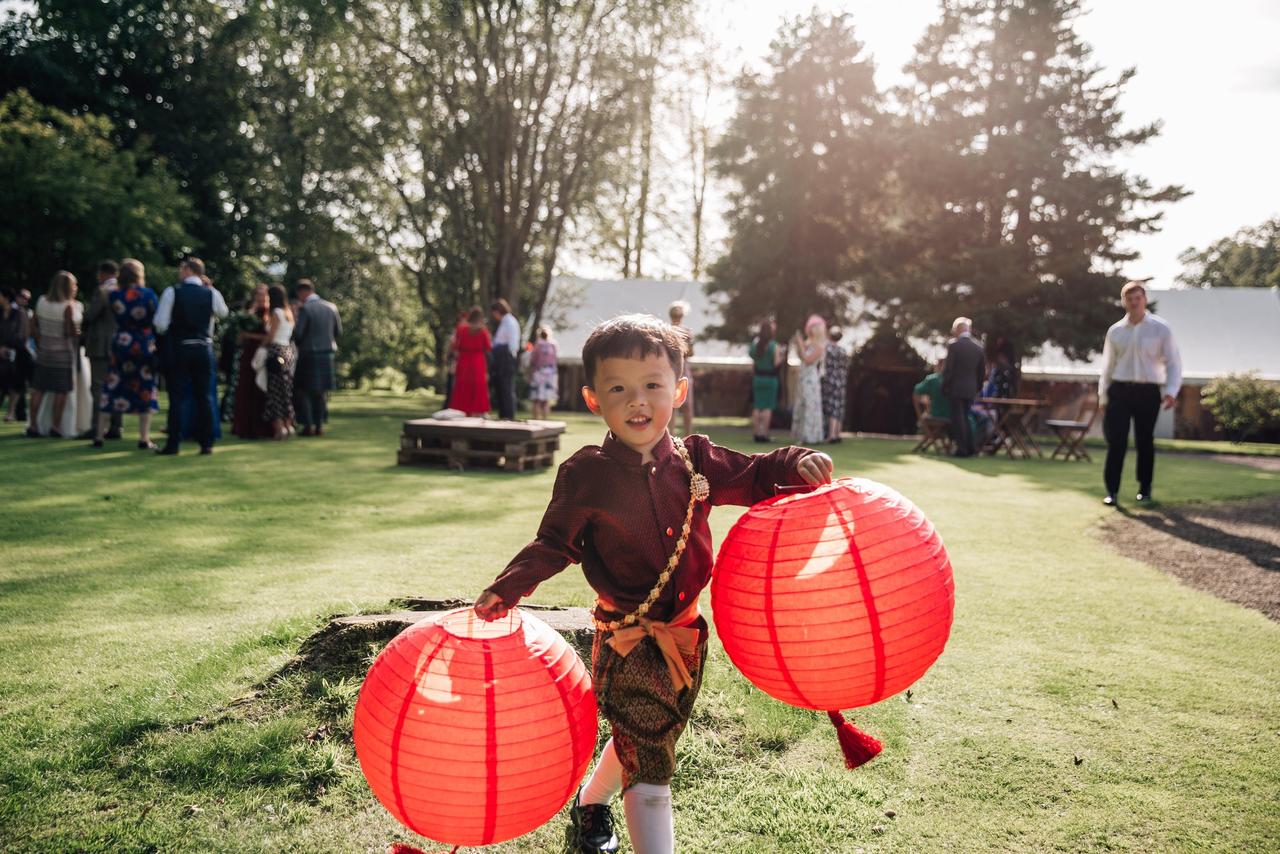
The Reception
“We were ‘piped’ into dinner and did speeches before the meal - I learned both some Thai and Polish phrases for my speech which I’m quite astounded that I managed to remember.
“After we’d eaten I changed into a spangly evening dress for the ceilidh dance. Our band, Bahookie, played a mash-up of traditional ceilidh music with everything from hip hop to rock, with our Scottish friends ‘calling’ the dances and making sure that there weren’t any dangerous collisions. Murder on the dance floor is probably a good way to describe it. We finished the night singing Auld Lang Syne and one of our Scottish groomsmen opened a bottle of whisky for the wedding party after guests had left.”
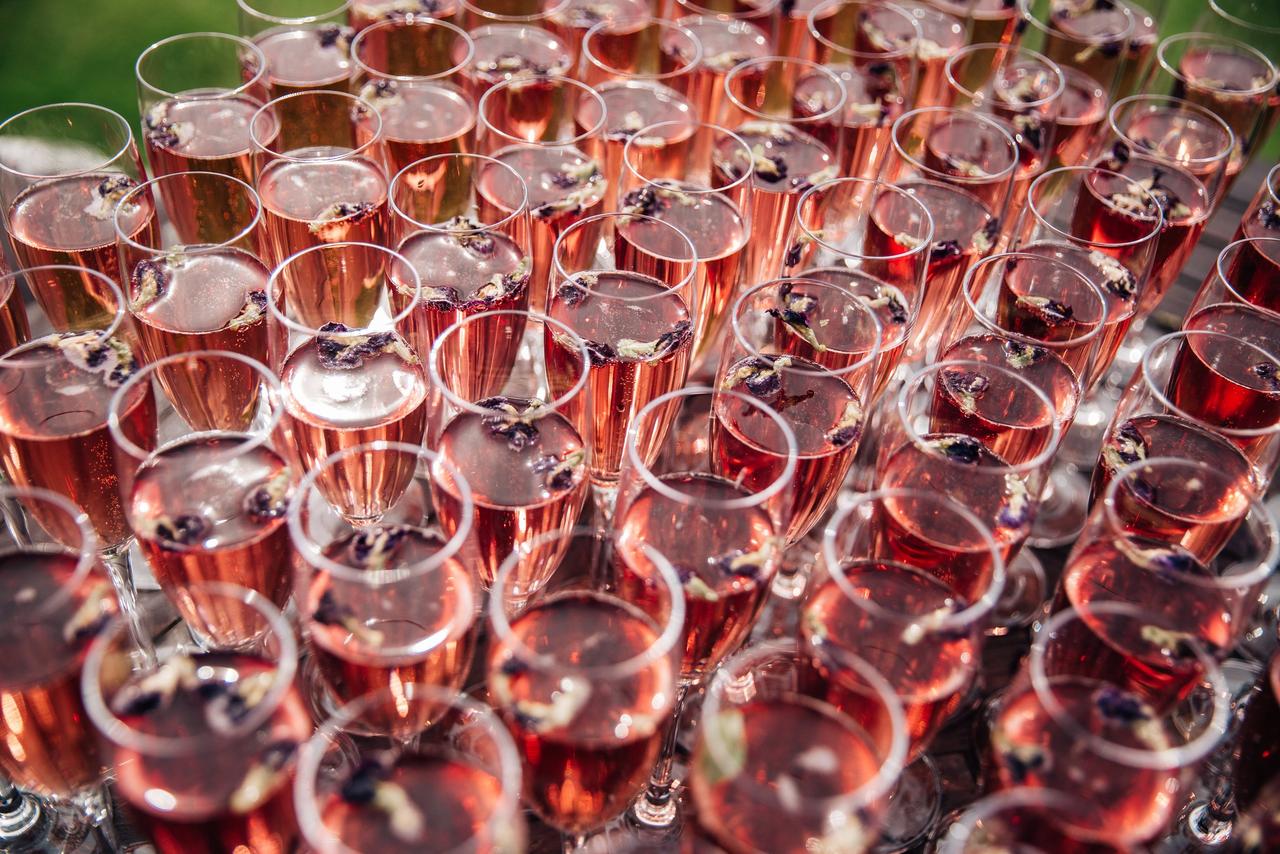
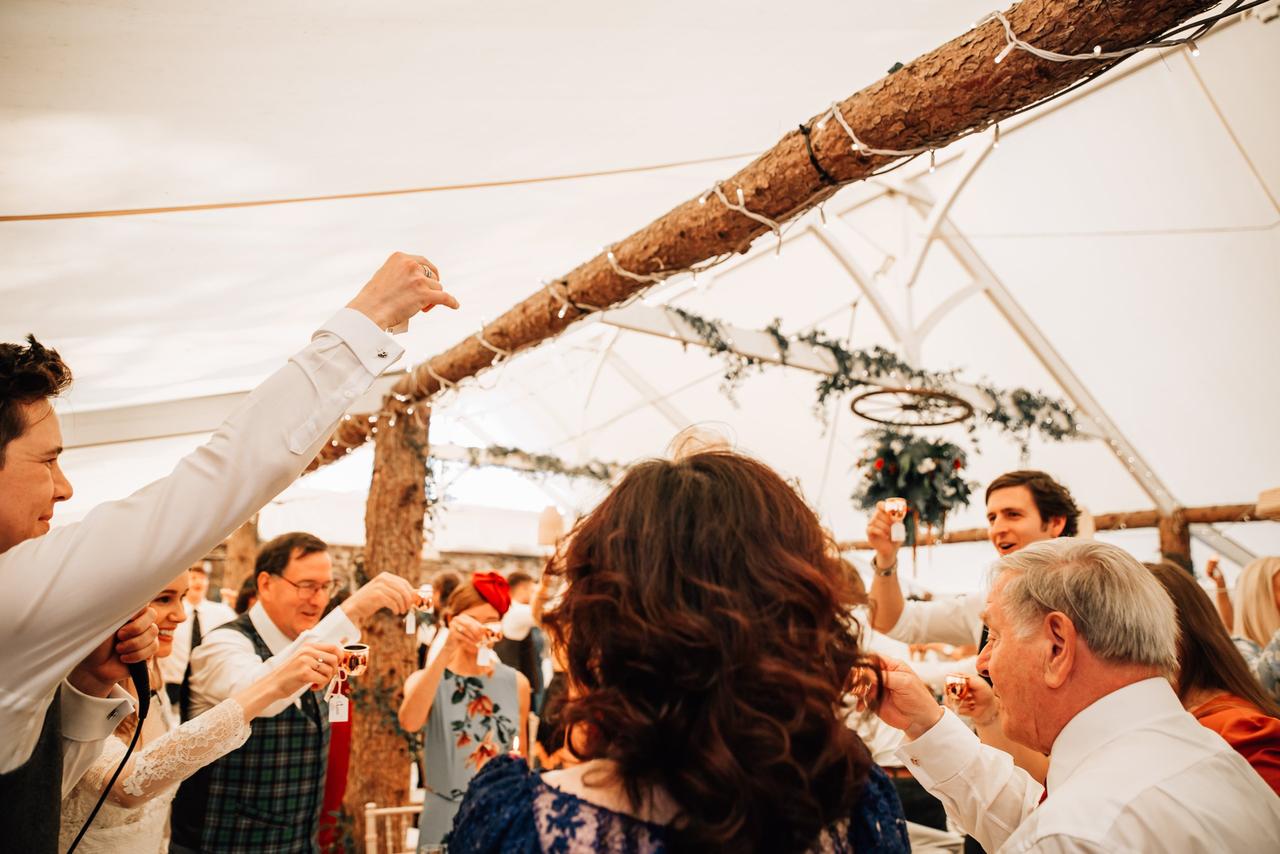
The Personal Touches
“I asked both of my parents to walk me up the grass ‘aisle’, my ‘best woman’ gave a speech and we spent the following (very sunny) day at a pub by the beach with our friends and family in St Andrews, where we met, which felt like a very special ending.
“Myres Castle was also a remarkable home for the weekend - the whole wedding party stayed in the castle for two nights which made everything fun and relaxed from the get-go. The owners, Henry and Amanda, cooked us all delicious meals with a post-wedding day fry-up which was very, very welcome. Having the same base, with family coming from all over the world (my brother lives in Australia), was a real luxury.”
What We Loved Most About Our Wedding
“Our suppliers all went to the ends of the earth to blend everything together - from bouquets to the tea ceremony setting and Thai/Scottish canapés. Everyone that we worked with did heaps of research and produced details that were mind-blowing. We couldn’t believe how well they’d interpreted our vision, seeing as our mood board was quite the cultural mash-up.
“Our favourite part of the day was the Chinese tea ceremony - having never been to one before I was nervous about making a gaffe but everyone seemed to really enjoy it and it felt ‘right’ to both of us. It was a lovely way to bring our families together.”

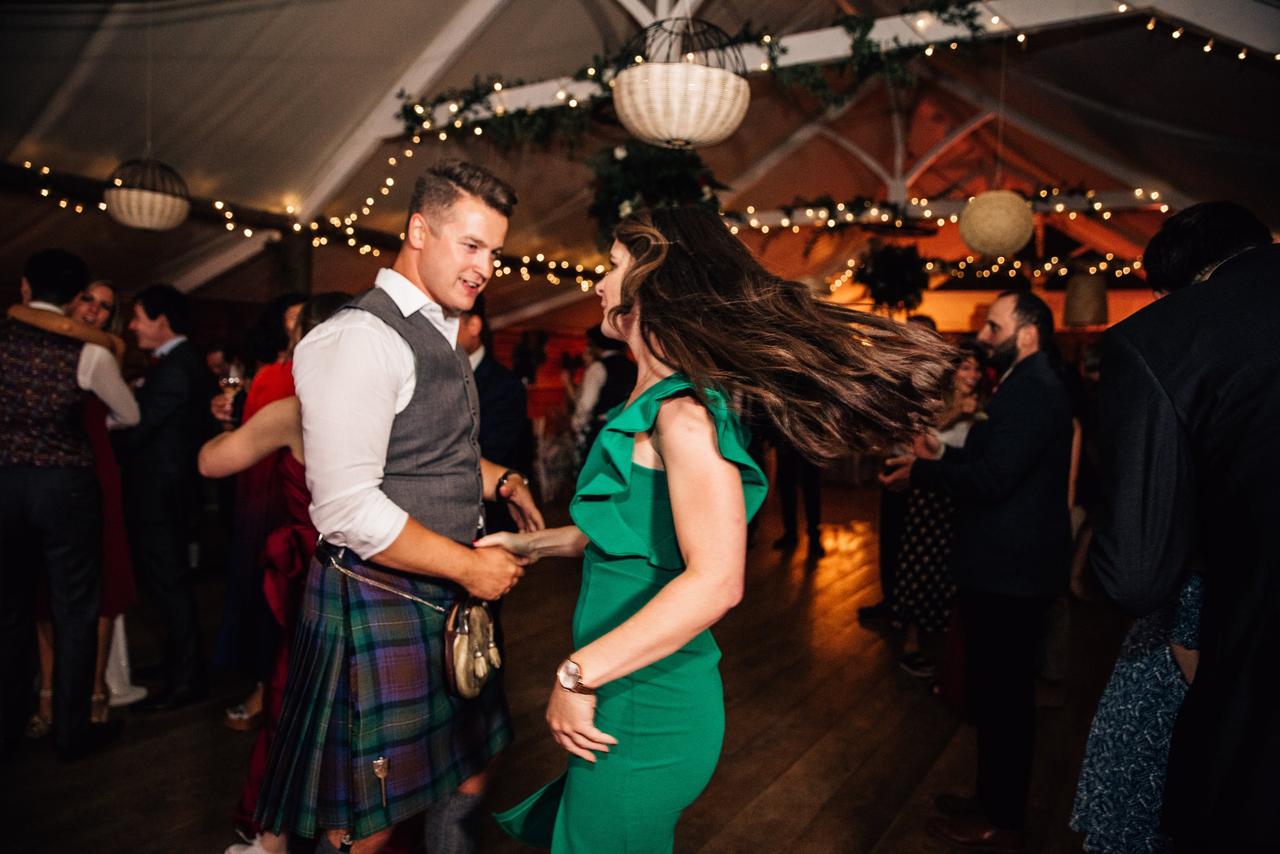

How We Got the Balance Right
“We hashed out the big stuff first - that we definitely wanted a civil service, that we wanted to get married near where we met in Scotland and that Thai food was a must. From there we weaved in more varied elements and our families did what they did best: my dad took care of speeches, booze and logistics, my mum and sister ensured that the wedding party were all taken care of, Nick’s family helped to plan the menu and Chinese tea ceremony and our friends brought everything to life on the day.
“There were some tricky moments along the way - especially where getting the food ‘just so’ was concerned and there was a bit of human Jenga involved in room allocations, but, with the minor exception of some unexpected bagpipe solos, everything worked out as we’d hoped on the day.”
Our Advice for Couples Planning a Multicultural Marriage
“Decide what both of you want most on the day and go with both your heart and gut; a blended wedding doesn’t need to be perfect or adhere to a rule book. The most vital thing is that it represents you as a couple. If you love some traditions but aren’t too sure about others, pick what lights your fire and leave the rest (as long as it’s legal). You might even inadvertently start some new family rituals of your own.”
Rebecca and Preeyan
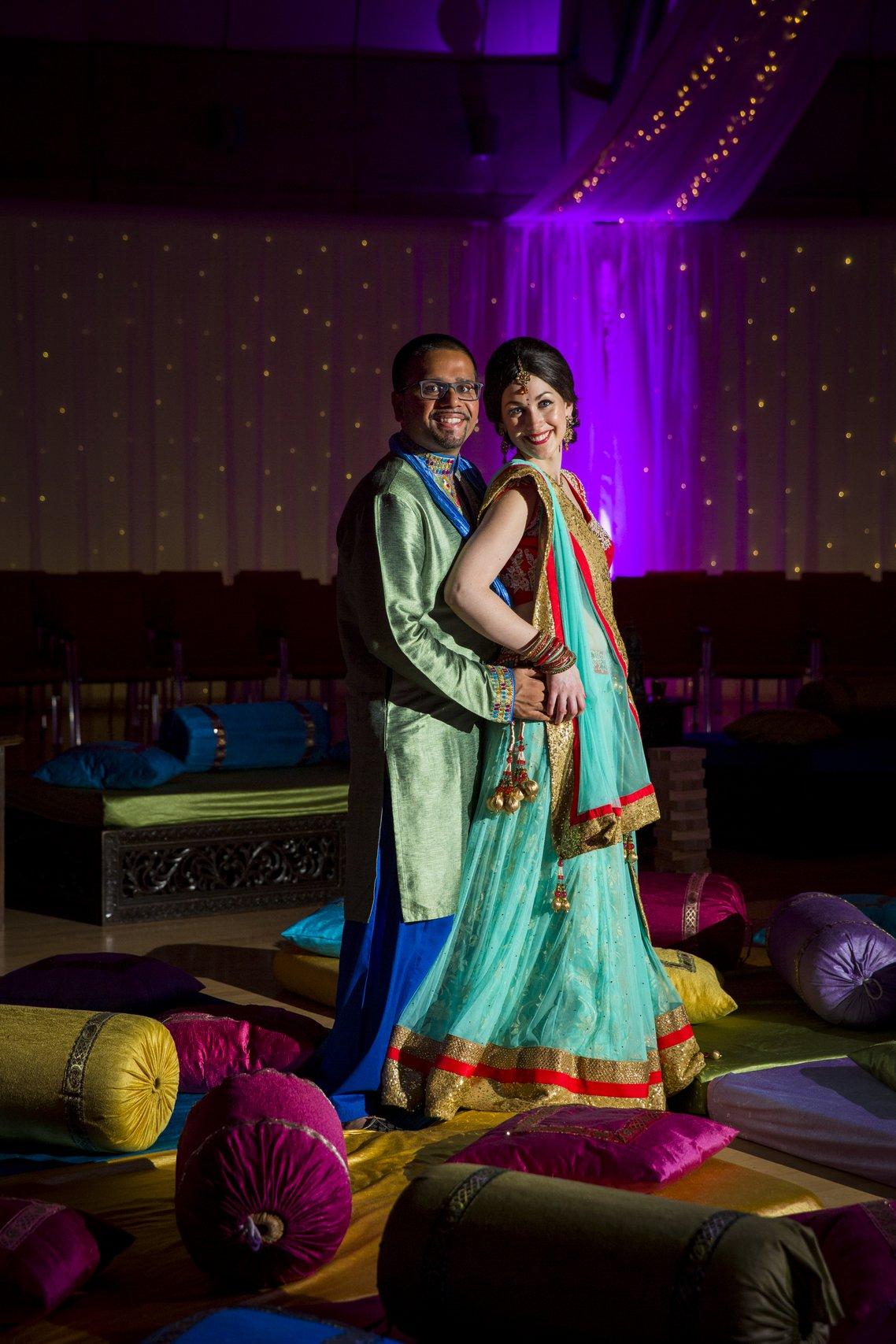
Our Cultural Heritage
"I’m English and Preeyan is Indian."
How We Began Wedding Planning
"We always wanted to combine both of our backgrounds and make sure that our guests enjoyed both cultures within our celebration - we decided early on that we didn't want a huge, traditional Indian wedding as such. We compromised by just having a Mehfil (an Indian music night) and then having reduced numbers of guests at the church and reception."
How We Combined Our Family Traditions
The Marriage Ceremony
"We got married in an English church but had a Jaan arrival, as is common at Indian weddings. It’s a procession that represents the welcoming of the groom by the bride’s family."
The Wedding Breakfast
"We planned a vegetarian wedding menu to honour Preeyan’s family’s beliefs. Gujarati Indian weddings are known for their colourful vegetarian banquets and we wanted to showcase that. In traditional Gujarati Indian culture alcohol is also not permitted so we decided not to have alcohol until the end of the wedding breakfast in order to allow the elder family members to attend the majority of the day."
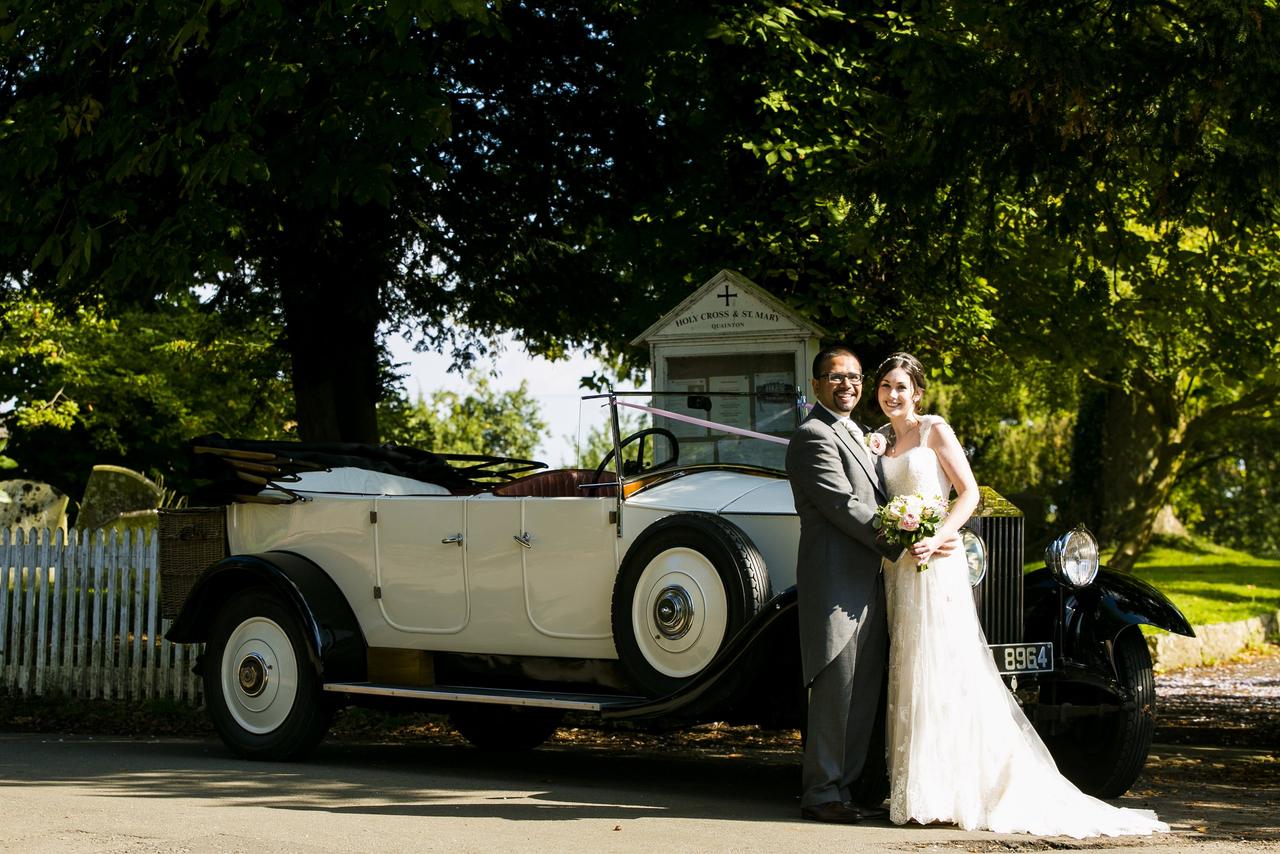
The Reception
"We had Dhol players - Indian drummers - to get the party started! Music on the dance floor blended Bollywood and western."
The Personal Touches
"Most women at the wedding wore sarees, including our English guests, which felt really special for both of us and it was an element of the day that my friends loved."
What We Loved Most About Our Wedding
"Following up a church service with the vibrant food and music of the Mehfil night."
How We Got the Balance Right
"By mixing both cultures was as equal a way as we could within one day so that key traditions were reflected on both sides."
Our Advice for Couples Planning a Multicultural Wedding
“This really is such a special day for you both and you are the ones who will remember it the most. While being respectful to both faiths, religions or customs is important, you have to make sure that you still prioritise what’s important to you above all.”
How to Plan a Multicultural Wedding, According to the Pros in the Know

1. Remember Why You're Saying Your Vows
Wedding specialist at Combermere Abbey, Rachel Newton, stresses that you’re not embarking on marriage just to make your auntie happy. “Shape your wedding day around the reasons that you’re marrying one another and the things that make you unique as a couple. Then bring in multicultural traditions that represent both of your families from there.”
2. Consider a ‘Blank Canvas' Venue
Rachel highlights that hosting your wedding on ‘neutral’ ground can enrich multicultural celebrations:
“Seek out a wedding venue that is purposefully neutral. Ceremony and celebration spaces that are blank canvases allow couples to style the day however they wish. This is not only favourable for decorative purposes, but for practical and cultural reasons too. You can embellish your day with a variety of colours and themes while also ensuring that you have the space and facilities to include traditions that are important to your cultures. A versatile wedding venue will mean that you can respect the traditions of one culture while also accommodating another.
“Opting for a ceremony location that is not attached to any one religion may be crucial too, depending on your circumstances. You don’t want to risk offending one side of the family by hosting your ceremony at a religious centre that only honours one side of the family’s beliefs. Choosing a neutral venue that you can customise to suit your own wedding vision as a couple may be the best decision, but each multicultural wedding is by definition very different.”
3. Be Sensitive to Expectations
Whether your grandfather has a set idea of what a marriage ceremony involves or your future mother-in-law has an opinion on what you’ll be wearing, Rachel advocates “hearing your families out and trying to make them feel involved where possible.”
Ask your parents which elements of the wedding matter the most to them while being clear about what yourself and your partner are planning. Chances are you can arrive at compromises and honour each other's cultures while creating space just to be ‘you’. Commemorating long-held family traditions will be all the more magical if you make them your own.

4. Think About Having Two Celebrations
If planning a multicultural wedding is beginning to feel more akin to a stressful slog, consider hosting two distinct services or celebrations if time and budget allow. This should allow you to delegate wedding tasks to the respective families for each ceremony, so it needn’t mean double the work, but it can be trickier logistically. Rachel’s advice is to “mull it over with your partner as to what works best for you and be honest with both sides of the family as to what support you need from them.”
5. Share Cultural Customs with Your Guests
Just as open communication with your families is important, Rachel recommends keeping guests in the loop as to your plan of action, any specific dress codes and the meaning behind different cultural traditions, including linguistic translations where necessary.
“Perhaps add some information about the cultures of the respective families in the wedding invitation to help your guests to understand what your wedding ceremony may entail," she suggests. "Help guests to understand any specific rituals or traditions that they may encounter on the day and let them know how they can get involved if they wish.”
As for invites and on-the-day aesthetic, multicultural stationery expert Vaishali Shah of Ananya Cards says that discussing your plans with your respective families beforehand can be helpful “to determine any essential motifs, colours related to cultural heritage, or most vitally, any ‘unlucky’ colours or symbols to be avoided”. You can then reflect your choices in your wedding day, whether it’s highlighting a particular shade or symbol or designing a contemporary, unique take on your heritage and family traditions.
On the subject of family, it’s vital to establish invitation etiquette in advance, according to Vaishali: “Find out exactly whose names you should include on invitations. Indian invitations, for example, often include the names of parents, grandparents and older siblings in one official invitation - get clarity on this to save yourself a potential headache later on.”
Finally, a wedding website is also a handy platform on which to outline cultural traditions and help guests to get a feel for your upcoming celebrations. Including explanations in orders of service or on ‘plan of the day’ signs can help every guest to feel more included too.
Want to find the best wedding website for you? Here's our pick of the top sites to help you build one.

